This site is not, nor does it have links to, the official website of the Cheltenham Festival , providing instead an academic study of how the Cheltenham Festival evolved to become the centrepiece of National Hunt racing.
Every effort has been made to contact copyright holders of material reproduced in this article, and if someone believes that they are the rightful owner where acknowledgement has not been stated, I would be pleased to rectify the omission. (© John W Slusar 2024)
A Hardback and Paperback book, 'The Evolution of the Cheltenham Festival' are available for purchase by emailing johnwslusar@gmail.com
INTRODUCTION
The Cheltenham Festival celebrated its centenary in 2011 having been staged for the first time as a 2-day meeting on Wednesday 8th and Thursday 9th March 1911. Today the racecourse is accepted as the home of National Hunt racing and the ideal place to stage a Festival of National Hunt racing to crown the season's champions, but was Cheltenham always the most likely place to hold the Festival and, if not, which other racecourses were in the running? Although the earliest Cheltenham races were held in 1815, holding their own Gold Cup over 3 miles on the Flat in 1819, and staging their own St Leger in 1821, they were never going to make it as a prinicpal Flat racecourse as they were beneath the curve on all known measures. Doncaster had staged a St Leger since 1776; Epsom had held its first Oaks in 1779, followed a year later by the Derby, while Ascot had beaten Cheltenham to the Gold Cup, staging their first Gold Cup in 1807. Furthermore, Flat racings headquarters were firmly centred on Newmarket, who had already claimed their own 2 Classics, the 2000 Guineas in 1809, and the 1000 Guineas in 1814, so all the trump cards had been claimed by the time that Cheltenham had entered the race. However, key questions still need to be investigated to fully appreciate how Cheltenham won the race to stage the National Hunt Festival.
If the foundation stones for the Festival are the National Hunt Challenge Cup, the Grand Annual and the National Hunt Handicap Chase, all historically important races, one of which came into being as early as 1834, and all of which were nomadic before 1911, then how did Cheltenham incorporate them into their Festival programme on a permanent basis?
The most effective organisations operate more efficiently when pioneering 'Chiefs' provide guidance and inspiration to countless 'Indians'. Pre-1911 most of the racecourses which had, at one time or another, staged the National Hunt Challenge Cup, the Grand Annual or the National Hunt Handicap Chase, were run by efficient committees, but most lacked leaders with the necessary vision to promote their racecourse as something out of the ordinary. Cheltenham, on the other hand, had leaders with that necessary vision to become the centre of excellence for National Hunt racing, be it William Holman, Baring Bingham, Frederick Cathcart, the Nicholson family, Johnny Henderson or Lord Vestey, they all played their part in ensuring that, today, the Cheltenham Festival is at the forefront of the minds of National Hunt racing enthusiasts all year long.
Today, in 2024, the Cheltenham Festival spreads over 4 days, staging 7 showcase races each day, but what evolutionary stages did those 28 races go through before being accepted as the best 28 jigsaw pieces to solve the puzzle of what constitutes an end of season National Hunt Championship extravaganza?
1815-1819 Cheltenham Gold Cup, Gloucestershire Stakes
The earliest record of racing in Cheltenham was in 1815 when a meeting took place on Nottingham Hill, although details about race names, runners and results is sparse. It was a further 3 years before mention was made of a second meeting in Cheltenham, and this time it was staged on Cleeve Hill which overlooks the present day Prestbury Park racecourse. The meeting was held on Tuesday 25th August 1818, offering a 5-race card organised by Mr E Jones, who had an eye for business because he owned the Shakespeare Inn on Lower High Street and realised such a meeting would bring crowds flocking to the town. Mr E Jones was replaced by John Taylor at the Shakespeare Inn in 1830 and the pub was later renamed The Shamrock Inn in 2007. By the time of the next meeting in 1819 a new course had been set out on the West Down of Cleeve Hill, with the Duke of Gloucester acting as the first patron and sponsor, supporting the meeting with a 100 guinea donation, and it was a competitive meeting attended by the nobility. A grandstand was erected on Cleeve Common which was said to be truly spectacular, and was even visible from Cheltenham Promenade, some miles away. The exact location of the grandstand was unknown until excavations began in 2023 to reveal its position. It was also a significant meeting because races like the Gloucestershire Stakes and Gold Cup, a piece of Plate valued at 100 guineas, began to emerge. It was a three-day meeting which started on Wednesday 25th August 1819, and concluded on Friday 27th August 1819 when the Gold Cup, a Flat race over 3 miles, was held. On the opening day the feature race, the Gloucestershire Stakes, was won by Mr Calley's Champignon, while the feature on the middle day was the Farmers Stakes which went to Mr Day's Doctor getting the better of Lofty in a much-disputed race. However, the highlight of the meeting was the Cheltenham Gold Cup, a flat race over 3 miles, which saw Spectre defeat Zenith and Fitz-Orville.
Wednesday 25th August 1819
Gloucestershire Stakes 100 Guineas over 2 miles
1. Champignon, brown colt owned by Mr Calley
2. Spectre, bay colt owned by Mr Bodenham
3. Sovereign owned by Mr Terrett
8 ran
Friday 27th August 1819
Cheltenham Gold Cup 100 Guineas over 3 miles
1. Spectre (7/2), bay colt owned by Mr Bodenham
2. Zenith (7/4 fav), grey colt owned by Lord Rous
3. Fitz-Orville (10/1) owned by Mr West
4. Sovereign (10/1) owned by Mr Terrett
5. Indus (3/1) owned by Mr Charlton


1820s Cheltenham Gold Cup, St Leger, Gloucestershire Stakes
In the next decade races continued in the vicinity of Cleeve Hill starting with a 3-day meeting between Tuesday 25th July and Friday 28th July 1820, with a day off on Thursday for hunting. The feature race on the first day continued to be the Gloucestershire Stakes over 2 miles, and on the Friday the second Gold Cup was held over a 3-mile flat course.
Tuesday 25th July 1820
Gloucestershire Stakes 100 guineas over 2 miles
1. Spectre (8/1), bay horse owned by Mr Bodenham
2. Shamrock (3/1 fav), brown colt owned by Mr L Charlton
3. Elastic (100/8), brown colt owned by Mr Biggs
12 ran
Friday 28th July 1820
Cheltenham Gold Cup 100 guineas over 3 miles
1. Champignon (8/11 fav), bay colt owned by Mr Fraser
2. Shamrock, brown colt owned by Mr L Charlton
3. Elastic, brown colt owned by Mr Biggs
5 ran
By 1821 the race committee decided to launch their own St Leger despite Doncaster staging a nationally recognised Classic St Leger since 1776. They also introduced the Cheltenham and Gloucester Club Stakes, and continued with the Gloucestershire Stakes and Gold Cup at the 3-day meeting held on the Cleeve Hill course from Wednesday 18th July to Friday 20th July 1821.
Wednesday 18th July 1821
Cheltenham St Leger Stakes 25 guineas each for 3-year-olds over a mile
1. Pastorella (1/3 fav) bay filly owned by Mr T Sadler
2. Valentine, brown colt owned by Mr Jones
3. Fyldener colt owned by Mr J Stevens
4. Gloucestershire Stakes 100 guineas over 2 miles
5. Strephon (6/1), bay horse owned by Mr T Sadler
6. Claudius (20/1), grey colt owned by Mr Mytton
7. Roman (5/1), bay horse owned by Lord Warwick
12 ran
Friday 20th July 1821
Cheltenham Gold Cup 100 guineas over 3 miles
1. Claudius (2/1), grey colt owned by Mr Mytton
2. Spectre (4/6 fav), bay horse owned by Mr Bodenham
3. Alpha (20/1), bay gelding owned by Mr West
4. Gleaner (20/1), black colt owned by Mr R Caning
4 ran; 103%
The 1822 three-day meeting was held from Wednesday 17th July to Friday 19th July 1822, the card included the usual St Leger, Gloucestershire Stakes and Gold Cup.
Wednesday 17th July 1822
St Leger Stakes 25 guineas each for 3-year-olds over a mile
1. Champion, brown colt owned by Mr Jones
2. Gulliver, bay colt owned by Mr L Charlton
3. Picton, brown colt owned by Mr Benson
3 ran
Gloucestershire Stakes 100 guineas over 2 miles
1. Master Henry (5/2 fav), bay horse owned by Mr L Charlton
2. Snowdon (10/1), grey horse owned by Major Ormsby Gore
3. Savernake (5/1) bay horse owned by Lord Ailesbury
14 ran
Friday 19th July 1822
Cheltenham Gold Cup 100 guineas over 3 miles
1. Master Henry (long odds on) owned by Mr L Charlton
2. Savernake owned by Lord Ailesbury
2 ran
The 1823 three-day meeting was staged from Wednesday 16th July to Friday 18th July 1823 with the cards consisting of the usual races.
Wednesday 16th July 1823
St Leger Stakes 25 guineas each for 3-year-olds over a mile
1. Volomer, black colt owned by Mr W West and ridden by John Day
2. Caroline, brown filly owned by Mr Jones
3. Achmet, chestnut colt owned by Major Gore
3 ran
Gloucestershire Stakes 100 guineas over 2 miles
1. Angelica (20/1), chestnut filly owned by Mr W West and ridden by S Barnard
2. Atlas (5/4 fav), bay horse owned by Mr I Sadler
3. Tarragon (5/1), bay horse owned by Sir T Stanley
11 ran
Friday 18th July 1823
Cheltenham Gold Cup 100 guineas over 3 miles
1. Angelica (3/1), chestnut filly owned by Mr W West and ridden by S Barnard
2. Melampus owned by Mr C Day
3. Haphazard colt owned by Mr Willis
5 ran
The 1824 three-day meeting was held between Wednesday 21st July and Friday 23rd July 1824 and was a much fuller programme than previous meetings, with more runners, the usual 3 principal races, and in addition the Prestbury Stakes and Town Plate.
Wednesday 21st July 1824
Gloucestershire Stakes 100 guineas over 2 miles
1. Longwaist (6/1) owned by Fulwar Craven and ridden by Arthur Pavis
2. Rowlston (10/1) owned by Mr Ormsby Gore
3. Whittington (10/1) owned by Mr Mytton
11 ran
St Legers Stakes 25 guineas each for 3-year-olds over a mile
1. Guy Faux, bay colt owned by Mr Yates and ridden by S Barnard
2. Sir Gray (4/7 fav) bay colt owned by Mr Tomes
3. Fille de Joie owned by Mr Yates
Friday 23rd July 1824
Cheltenham Gold Cup 100 Guineas over 3 miles
1. Euphrates (5/1) owned by Mr Mytton and ridden by W Scott
2. Rowlston (10/1) owned by Mr Ormsby Gore
3. Sharper owned by Mr West
4. Bertram (4/6 fav) owned by Mr Fulwar Craven
The 1825 three-day meeting followed the traditional pattern, lasting from Wednesday 20th July to Friday 22nd July 1825, with the feature Gold Cup on the final day.
Wednesday 20th July 1825
Gloucestershire Stakes 100 guineas over 2 miles
1. Claude Lorraine (9/1) owned by Mr West and ridden by T Howard
2. Triumph (10/1) owned by Mr Sadler
3. Sloe (9/2) owned by Mr John Day
11 ran
St Leger Stakes 25 guineas each over a mile
1. Mephistophales bay colt owned by Lord Warwick and ridden by John Day
2. Flexible (2/5 fav) owned by Mr Bartley
3. Vesuvius owned by Major Gore
3 ran
Friday 22nd July 1825
Cheltenham Gold Cup 100 guineas over 3 miles
1. Longwaist (1/2 fav) owned by Fulwar Craven, ridden by Sam Day
2. Euphrates owned by Mr Mytton
3. Flexible owned by Mr Bartley
5 ran
Major changes to the 3-day card run from Wednesday 19th July to Friday 21st July 1826, with the Prestbury Stakes and St Leger dropped from the programme. However, the Gold Cup remained the principal race at the meeting, although it reduced to be a Match, and even the future Prime Minister, Lord Palmerston, had runners and attended.
Wednesday 19th July 1826
Gloucestershire Stakes 100 guineas over 2 miles
1. Cain (8/1), bay colt owned by Mr Yates and ridden by Spring
2. Burgundy (10/1) owned by Mr C Day
3. Luzborough (9/4 fav) owned by Lord Palmerston
11 ran
Friday 21st July 1826
Cheltenham Gold Cup 100 guineas over 3 miles
1. Burgundy (3/1) chestnut colt owned by Mr C Day and ridden by C Day
2. Longwaist (1/4 fav) owned by Mr Mytton
2 ran
The 1827 3-day meeting saw major changes, not least that it was held in June and began on a Tuesday. The St Leger returned to the programme to open up the meeting, and the Gold Cup proved to be more competitive.
Tuesday 26th June 1827
St Leger Stakes 25 sovereigns each over a mile
1. Pontiff (4/6 fav) owned by Mr Haffenden and ridden by Bill Arnull
2. Belvidera brown filly owned by Mr Ormsby Gore
2 ran
Gloucestershire Stakes 100 sovereigns over 2 miles
1. El Dorado (5/1) owned by Fulwar Craven and ridden by Sam Day
2. Maldonia (10/1) owned by Mr Dilly
3. Jocko (8/1) owned by Mr I Daler
4. Dr Faustus (5/2 fav) owned by Sir T Stanley
12 ran
Thursday 28th June 1827
Cheltenham Gold Cup 100 guineas over 3 miles
1. Jocko owned by Mr I Sadler and ridden by Jem Chapple
2. Hobgoblin (4/6 fav) owned by Lord Exeter
3. Palatine owned by Mr R Griffiths
4. The Moor owned by Mr Ormsby Gore
4 ran
The 1828 3-day meeting was moved even earlier in June from Tuesday 17th June to Thursday 19th June 1828, the St Leger disappointingly was a walk-over, while the feature Gold Cup attracted just 3 runners.
Tuesday 17th June 1828
St Leger Stakes 25 sovereigns each over a mile
1. Challenger, chestnut colt owned by Mr I Sadler walked-over
Gloucestershire Stakes 100 sovereigns over 2 miles
1. Trumpeter (10/1) owned by Mr Haffenden and ridden by Bill Arnull
2. Alcaston (6/1) owned by Mr Benson
3. Jocko (5/1) owned by Mr I Sadler
13 ran
Thursday 19th June 1828
Cheltenham Gold Cup 100 sovereigns over 3 miles
1. Luzborough (4/7 fav) owned by Mr Dilly and ridden by Sam Day
2. Euphrates (2/1) owned by Mr Mytton
3. Manes (10/1) owned by Mr C Day
3 ran
A return to the traditional July dates for the 3-day 1829 meeting, although day 2 was run by the Bibury Club. The St Leger, a walk-over in 1828, dropped out of the programme, and the Gold Cup was only a Match.
Tuesday 21st July 1829
Gloucestershire Stakes 100 sovereigns over 2 miles
1. MayFly (5/2 fav) owned by Sir T Stanley and ridden by Sim Templeman
2. Haji Baba (4/1) owned by Mr Day
3. Jocko (10/1) owned by Mr I Sadler
10 ran
Thursday 23rd July 1829
Cheltenham Gold Cup 100 sovereigns over 3 miles
1. Mayfly (2/5 fav) owned by Sir T Stanley and ridden by Sim Templeman
2. Nusquito (2/1) owned by Mr Griffiths
2 ran
Curate & later Reverend Francis Close
In 1824 a Curate named Francis Close was appointed to Holy Trinity Church, Cheltenham, and he was not keen on horse racing or the unsavoury members of the public, like pickpockets, drunkards and prostitues, which were attracted to the races. He eventually became a Reverend and in 1827 began preaching sermons about the evils of horse racing, even printing out versions of his sermons to be shared and sold. Within 2 years thousands supported his stance on horse racing, and they were not afraid to use violence and break the law to make their feelings known. At the 1829 meeting the mob he incited caused as much disruption as they could, and even resorted to throwing stones at the horses and their jockeys. Although the racecourse officials expected similar violence at the 1830 meeting, they were not preapred for what happened, because the grandstand was burnt to the ground, effectively putting an end to Cheltenham races on Cleeeve Hill. That may well have been that for Cheltenham as a racing centre, were it not for the fact that Thomas Robinson came to the rescue. He had leased a significant part of Prestbury Park from its owned, Keppel Craven, and part of that agreement outlined the fact that for one week a year, in June or July, 3 of the fields on Prestbury Park could be used for the purposes of horse racing. Robinson stepped up to the mark in 1831 by suggesting that Cheltenham races be relocated to Prestbury Park.
1830s Move to Prestbury Park, Cheltenham Gold Cup, Grand Annual
The decade of the 1830s not only saw Flat racing continue at Cheltenham, with the Gold Cup still the principal race, but by the early 1830s National Hunt racing began emerging in the vicinity of Cheltenham at Andoversford. Therefore, a later foundation stone of the Cheltenham Festival, the Grand Annual, was contested for the first time in 1834. The 3-day meeting in 1830 took place from Tuesday 27th July to Thursday 29th July 1830 and was the final meeting to be held on the old course. By 1831 the meeting had moved to the new course at Prestbury.
Tuesday 27th July 1830 Gloucestershire Stakes 100 sovereigns over 2 miles
1. Hesperus (5/1) owned by Mr Ormsby Gore and ridden by Sam Darling
2. Allerdale (3/1 jt fav) owned by Mr Richards
3. Villager (3/1 jt fav) owned by Mr Davis
9 ran
Thursday 29th July 1830
Cheltenham Gold Cup 100 sovereigns over 3 miles
1. Jocko, brown gelding owned by Mr Sadler and ridden by Jem Chapple
2. Fantoccino, bay colt owned by Mr I Day
3. Musquito, bay horse owned by Mr Griffiths
4. Barabbas, bay colt owned by Mr Griffiths
4 ran
The 1831 meeting was restricted to just two days, from Tuesday 19th July to Wednesday 20th July 1831 and took place on the new course at Prestbury Park. It was clear that the public fully praised the Stewards decision to relocate the meeting from Cleeve Hill to its new site, with the Oxford Journal writing, ‘the judicious conduct of the Stewards not only helped the public by removing the races from Cleeve Hill, but also deserve praise for the admirable manner in which every arrangement has been carried into effect. The course cannot be surpassed in the kingdom, as that part of the course which approximates to the winning post is bounded om each side by gentle elevations, which rising like the galleries of a theatre, would afford an opportunity to at least 50,000 people to witness the whole race, while the more distant prospect of the hills, and the immense Vale of Gloucester, present all the beauty, variety and softness of an Italian landscape. The Grandstand is handsome and substantial, and is capable of containing 700 spectators.’ The only drawback of the 2-day meeting was that the Gold Cup did not fill, so was not part of the card.
Tuesday 19th July 1831
Gloucestershire Stakes 100 sovereigns over 2 miles
1. Mazeppa, chestnut colt owned by Mr Watts and ridden by Arthur Pavis
2. Bryan, owned by Sir L Glyn
3. Dr Faustus owned by Mr Bristow
8 ran
The 1832 meeting, staged from Tuesday 17th July to Thursday 19th July 1832 returned to the more traditional card, with the Gloucestershire Stakes opening the meeting, and the principal race, the Gold Cup, held on the final day, albeit a Match.
Tuesday 17th July 1832
Gloucestershire Stakes 100 sovereigns over 2 miles
1. Exile (5/1) owned by Mr West and ridden by Calloway
2. Mazeppa (3/1) owned by Mr Watts
3. Wassailer (3/1) owned by Mr Wiltshire
7 ran
Thursday 19th July 1832
Cheltenham Gold Cup 100 sovereigns over 3 miles
1. Liston (1/2 fav) owned by Mr Isaac Day and ridden by Arthur Pavis
2. Thorngrove (6/4) owned by Mr Griffiths
2 ran
The 1833 meeting, held from Tuesday 16th July to Thursday 18th July 1833 was a disappointing meeting as the Gold Cup was a walk-over from the previous year's winner Exile.
Tuesday 16th July 1833
Gloucestershire Stakes 100 sovereigns over 2 miles
1. Exile (4/1) owned by Mr West and ridden by John Day
2. Conscript owned by Mr Isaac Day
3. Liston owned by Mr Isaac Day
4. Copper Captain (7/4 fav) owned by Mr Cosby
9 ran
Thursday 18th July 1833
Cheltenham Gold Cup 100 sovereigns over 3 miles
Exile owned by Mr West walked-over
The 1834 meeting reverted to a 2-day meeting from Tuesday 15th July to Wednesday 16th July 1834 and had to drop the Gold Cup from the card because it did not fill, having experienced a Match and walk-over in the 2 previous years.
Tuesday 15th July 1834
Gloucestershire Stakes 100 sovereigns over 2 miles
1. Diana, owned by Mr Isaac Day and ridden by Arthur Pavis
2. Uncle Toby owned by John Peel
3. Malibran owned by Mr Etwall
5 ran
The 1835 2-day meeting was from Tuesday 14th July to Wednesday 15th July 1835 and had a better take-up in the Gloucestershire Stakes and was able to stage a Gold Cup.
Tuesday 14th July 1835
Gloucestershire Stakes 100 sovereigns over 2 miles
1. Trim (4/1) owned by John Peel and ridden by Jem Chapple
2. Rambler (8/1) owned by Mr Griffiths
3. Tarick (8/1) owned by John Peel
10 ran
Wednesday 15th July 1835
Cheltenham Gold Cup 100 sovereigns over 3 miles
1. Languid (3/1) owned by Mr Bristow and ridden by S Mann
2. Diana (1/5 fav) owned by Mr Isaac Day and ridden by Arthur Pavis
2 ran
The 1836 2-day meeting was earlier than usual, from Tuesday 5th July to Wednesday 6th July 1836, but staged a competitive Gloucestershire Stakes and one of the best Gold Cups for a while with a field of 5.
Tuesday 5th July 1836
Gloucestershire Stakes 100 sovereigns over 2 miles
1. Venison owned by John Day and ridden by Sam Day jnr
2. Paris owned by Captain Berkeley
3. Noodle owned by Mr E Peel
8 ran
Wednesday 6th July 1836
Cheltenham Gold Cup 100 sovereigns over 3 miles
1. Venison owned by John Day and ridden by Sam Day
2. Languid owned by Mr Bristow
3. Challenger owned by Mr Hobson
5 ran
The 1837 2-day meeting from Tuesday 4th July to Wednesday 5th July 1837 could not continue the progress from the previous year, with no Gold Cup.
Tuesday 4th July 1837
Gloucestershire Stakes 100 sovereigns over 2 miles
1. Slane (4/5 fav) owned by Colonel John Peel and ridden by Arthur Pavis
2. Heron (4/1) owned by Mr Fowler
3. Vathek (100/8) owned by Mr West
9 ran
In 1838 the 2-day meeting was advertised as the Cheltenham and Cotswold meeting which was from Tuesday 24th July to Wednesday 25th July 1838 and featured the Gloucestershire Stakes and Cheltenham Gold Cup.
Tuesday 24th July 1838
Gloucestershire Stakes 100 sovereigns over 2 miles
1. Barnacles (4/1) owned by Fulwar Craven and ridden by Jem Chapple
2. Zohrab (7/4) owned by Mr J O Failie
3. Toothill (evens fav) owned by Captain Gardnor
4. Lugwardine (10/1) owned by Mr Griffiths
4 ran
Wednesday 25th July 1838
Cheltenham Gold Cup 100 sovereigns over 2 and a half miles
1. The Skater (2/1) owned by Mr V Dolphin and ridden by Jem Chapple
2. King Cole (1/3 fav) owned by Mr T Walters
2 ran
The 1839 meeting took place on Tuesday 2nd and Wednesday 3rd July 1839 and did not feature a Gold Cup. Indeed, the Gold Cup was no longer a prominent feature of any future meetings, and by 1840 the Meeting, advertised as the Gloucester meeting, took place on the Cleeve Hill course.
Tuesday 2nd July 1839
Gloucestershire Stakes 100 sovereigns over 2 miles
1. Lugwardine (12/1) owned by Mr E Griffiths and ridden by Jem Chapple
2. The Skater (5/2) owned by Mr V Dolphin
3. Heron (2/1 fav) owned by Mr Fowler
7 ran


1830's National Hunt Racing comes to Cheltenham; Grand Annual
The Grand Annual Chase is the oldest race at the Festival having first been staged on 4th April 1834 over 4 miles of open country at Andoversford, near Cheltenham. It is the first foundation stone for today's Festival. Although that race was discontinued in the 1860s, it was revived in the early 1900s, although it was staged at various courses, notably Warwick, Melton Mowbray and Leicester. It was only in 1913 that it returned permanently to Cheltenham and has been a significant part of the Festival ever since. It is run over 1 mile 7 furlongs and 199 yards and 14 fences and is now classed as a Premier Handicap.
The inaugural running of Grand Annual Chase took place on Friday 4th April 1834 at Andoversford, in the vicinity of Cheltenham, in front of a crowd estimated at 10,000, when won by Fugleman owned and ridden by Mr R D’Oyley, beating Conrad owned by Colonel Gilbert. A local newspaper of the day, the Birmingham Journal, provided details about the course which extended to 4 miles, which could be seen in its entirety from the winning field and was selected by Lord Segrave, ‘To start by Harry's Wall - down the hill by Foxcote Grove over Whittingham Road by labourers' cottages, leaving Foxcote Village to the left, then across two pieces of meadow leading to the brook; jumping the brook and then up the hill with some stiff rails with ground ascending them, and over a high wall rendered more so from the ground ascending to it, when the hill was pretty well mounted, then across the flat across four extensive fields, Chifley Groves to the right into Claypitch, lying alongside the London Road, on the opposite side of which is a small grass cover.’ In the race itself Fugleman took the lead down the hill, at a pace which left the others very far behind, taking all of the walls and fences with consummate ease, and clearing the brook in splendid style. Then he made his way up the hill and over all of the walls until he came to the last fence well clear. However, at the last fence he did a complete somersault and severely cut his head, but the jockey remounted and recovered his composure with great celerity, he remounted and won cleverly, beating Conrad and Wooden-Legged Sailor.
Friday 4th April 1834
Grand Annual Steeplechase £25 over 4 miles at Andoversford
1. Fugleman owned and ridden by Mr R D’Oyley
2. Conrad owned by Colonel Gilbert and ridden by Mr Crommelin
3. Wooden-Legged Sailor owned and ridden by Mr Doyne
4. Giantess owned by Mr Taylor and ridden by Mr Baillie
5. Emperor owned by Mr Dutton and ridden by Mr Smart
6. Columbus owned and ridden by Mr Patrick
7. Don Giovanni owned by Mr Black and ridden by Mr Bryan
8. Colonel owned and ridden by Mr Harkshaw
9. Danseuse owned and ridden by Mr Crowther
10 accepted but only 9 ran
Cheltenham 1840s; Cleeve Hill racecourse; Gloucester Road course; Races lapse
In the decade of the 1840s Cheltenham saw races on Cleeve Hill in the early part of the decade, although they were renames as the County of Gloucester Races. A second meeting later in the season was meant to take place at the Hippodrome in October, but the death of the leesee of the Hippodrome caused the meeting to transfer back to Cleeve Hill. In the middle of the decade Cheltenham races ceased after disappointing crowds in 1842, when interest switched to Tewksbury, and it was a struggle before a Steeplechase meeting, including the Grand Annual, was reintroduced towards the end of the decade.
In 1840 a two-day meeting was staged on Tuesday and Wednesday 21st and 22nd July 1840 at Cleeve Hill, but the Cheltenham Chronicle commented, 'Cheltenham Races appear to have lost all traces of bustle and activity which used formerly to attend them. So little excitement did they create in the town, that it was at one time generally reported that races on Cleeve Hill would die a natural death.'
Tuesday 21st July 1840
Gloucestershire Stakes over 2 miles
1. THE DEAN (2/1 fav) owned by Mr R Collett and ridden by Whitehouse
2. JENNY JONES owned by Mr W Morland and ridden by Wakefield
3. CARAVAN owned by Mr Isaac Day and ridden by John Day
4. COMBAT owned by Mr G E Smith and ridden by Boyce
5. WEE WILLIE owned by Mr Meiklam and ridden by Noble
6. DARKNESS owned by Captain Williamson and ridden by Percy
The second meeting, also held on Cleeve Hill, was staged on Monday 12th October when the principal race was a 50 Guineas Silver Cup, but the crowd was much thinner than usual.
Monday 12th October 1840
Cheltenham Silver Cup over a mile and a half with 4 leaps over hurdles
1. SIR FELIX owned and ridden by Mr H N Powell
2. HARKAWAY owned by Mr Griffiths and ridden by T Jacobs
3. REDSKIN owned by Mr Bick and ridden by Sprigg
The next year the two-day meeting took place from Wednesday 21st July 1841 when the Prestbury Stakes was the main race.
Wednesday 21st July 1841
Prestbury Stakes over 2 miles
1. THE CURRIER (2/1 fav) owned by Mr T C Boode and ridden by S Rogers
2. BROADWATH (6/1) owned by Captain Pettat
3. THE DEAN (4/1) owned by Mr E V Jenkins
In 1842 the races were held in late June when the principal race, the Gloucestershire Stakes, took place on Wednesday 29th June 1842. Newspapers slated the meeting, suggesting the course presented a truly dreary aspect and the sport, if they may be called sport, was non-existent. After racing, an Ordinary at the Plough Hotel was only attended by a dozen gentlemen, 'the whole of the doings of 1842 were of so discouraging a character that it is believed there will be no attempt to continue the County of Gloucester races in connection with Cheltenham. It was even rumoured that the Grand Stand was to be demolished and its materials sold to the highest bidder.'
Wednesday 29th June 1842
Gloucestershire Stakes over 2 miles
1. BELLONA owned by Lord Eglinton and ridden by Tommy Lye
2. MILLEPEDE owned by Mr Wormald
3. ARETHUSA owned by Mr Bristow
There were no races at Cheltenham between 1843 and 1846 even though, in May 1844, a number of gentlemen tried to resurrect the meeting. A Committee was formed with the sole aim of trying to revive the former Cheltenham race meetings, the main members being John Norfolk, Mr R C Taylor, James Humphrey, John Griffiths, Thomas Clarke, John Berrington and John Onley. The latter member was apprehensive about pressing ahead with plans too quickly, and asked the Committee to consider 4 questions.
Firstly, would the town benefit from the races?
Secondly, there was insufficient support when the races were held at Prestbury Park or Cleeve Hill, so for what reason did the Committee believe that a revival would create more interest?
Thirdly, the fund set aside for the Stag Hunt was in a healthy state, but would those funds be depleted and set aside for racing?
Fourthly, the inhabitants of Tewksbury had kindly stepped in when Cheltenham struggled to organise a meeting, so did not deserve their established meeting to be challenged by a revived Cheltenham meeting.
In the end plans were put on hold and it took a further 3 years before the next races were held in the town but, on the positive side, it was a steeplechase meeting which, ultimately, the town would become famous for.
Racing returned to Cheltenham in April 1847 when a steeplechase meeting took place on Wednesday 14th April on a course within 2 miles of the town, with a certain William Archer riding in the principal race. The Stewards were Mr L Elliott, Mr S D Penrose and Mr J Dickson, while the Secretary was Mr Francis Martindale. The course was on the Winchcomb Road where a line of country was marked out between the villages of Prestbury and Southam, starting in a meadow owned by Mr Robinson. The course traversed Perry Hill, Hagg's Hill, Prestury Hill and Cleeve Hill, extending to 4 miles in total, and the main race was won by Mr Smith's Stanmore ridden by Holman, while a later Sweepstake over 3 miles later in the day went to Mr Samuel's Marie ridden by Kitton.
Wednesday 14th April 1847
Handicap Sweepstake over 4 miles
1. STANMORE owned by Mr Smith and ridden by Holman
2. DADDY LONGLEGS owned by Mr Elliott and ridden by William Archer
3. THE DOCTOR owned and ridden by Mr Sait
13 ran
Cheltenham Sweepstake over 3 miles
1. MARIE owned by Mr Samuel and ridden by Kitton
2. ACTRESS owned by Mr G Buck and ridden by Greaves
3. ESCAPE owned by Mr Nicholson and ridden by Boxall
The next year a steeplechase meeting was held on Tuesday 11th April 1848 on a 4 mile course on the outskirts of Cheltenham on the Gloucester Road, starting in the parish of Prestbury, the course being described as four miles of vale hunting country. There were 3 races on the card, two of which were well-subscribed chases. The first was won by Mr Storey's Standard Guard (10/1) ridden by Mr Storey, while the later race went to Mr Devenport's Thuragurton ridden by William Archer, father of the legendary jockey Fred Archer.
Tuesday 11th April 1848
Grand Open Handicap over 4 miles
1. STANDARD GUARD (10/1) owned by Mr Storey and ridden by Taylor
2. LINK BOY (20/1) owned by Mr Ketton and ridden by Ketton jnr
3. DUBIOUS (6/1 fav) owned by Mr Brown and ridden by Frisby
15 ran
Cheltenham Steeplechase over 3 miles
1. THURAGURTON owned by Mr Devonport and ridden by William Archer
2. VANGUARD owned by Mr Oliver and ridden by Oliver jnr
3. POWICK owned by Mr Sam Darling and ridden by Saunders
17 ran
In 1849 racing returned to Prestbury Park on Wednesday7th and Friday 9th February where 'a vast concourse of people were present and the newly erected Grandstand was filled to capacity by the fashionables.' The principal race was the historic Grand Annual Handicap over 4 miles which had 7 runners and was won by Mr Oliver's Pullaway (10/1) ridden by Davis.
Wednesday 7th February 1849
Grand Annual Handicap Steeplechase over 4 miles
1. PULLAWAY owned by Mr Oliver and ridden by Davis
2. VENGEANCE owned by Mr Verver and ridden by Oliver
3. LINKBOY owned and ridden by Mr Kitton
Cheltenham 1850s; Cleeve Hill & Prestbury courses; Cheltenham races lapse
The 1850s was a disappointing decade for the development of Cheltenham races, although National Hunt meetings continued to be staged at both Prestbury Park and at the foot of Cleeve Hill in the early part of the decade. However, pressure groups against racing became so powerful that the force they exerted was sufficient for the race committee to abandon Steeplechase racing in the town after the 1854 meeting. At the start of the decade in 1850 a two-day meeting was due to take place on Tuesday 26th and Wednesday 27th March, but in consequence of unfavourable weather the races were held over until Saturday 30th March and Monday 1st April, the meeting being held on Prestbury Park.
Saturday 30th March 1850
Cheltenham Free Handicap Hurdle over 2 miles and 6 hurdles
1. JACK-OF-ALL-TRADES owned by Mr Bernard and ridden by R James
2. TIPPERARY BOY owned by Mr Hughes
Grand Annual Steeplechase over 4 miles
1. FARNHAM owned by Mr Mangan and ridden by Abbot
2. PROCEED owned and ridden by Mr Mason
3. VERAX owned by Mr Keates and ridden by G Holman
4. ABD-EL-KADER owned by Mr Osborne and ridden by Wynne
A month earlier Abd-El-Kader had won the Aintree Grand National, leaving Farnham in his wake, and repeated the feat the next year.
In April 1851 the steeplechase meeting was held over an excellent course on the Evesham Road, at the foot of Cleeve Hill, attracting a huge crowd despite clashing with Newmarket's better established Craven meeting. The principal race was again the Grand Annual which went to Bedford, ridden by Fred Archer's father William.
Wednesday 9th April 1851
Grand Annual Steeplechase over 4 miles
1. BEDFORD owned by Mr P Barling and ridden by William Archer
2. TIPPERARY BOY owned by Mr Elwes
3. MULLIGAN owned by Mr Elmore
There was a very full programme in 1852 when the meeting took place on Thursday 25th and Friday 26th March. The card on day one opened with the Aristocratic Flat race over 2 miles which went to Maurice Daley (5/2) owned by Mr Cartwright and ridden by Captain Powlett, who had finished runner-up behind Miss Mowbray in the 1852 Aintree Grand National, and was followed by 3 well-subscribed steeplechases, each over 3 miles. The Free Handicap Chase was won by The Unknown owned by Mr J Henderson, a name later to become so famous at many Cheltenham Festivals in the 20th and 21st century. The Berkeley Hunt Steeplechase went to the 7/4 favourite Ploughboy owned by Mr Golby, while the concluding Farmers Chase saw Mr Brotheridge's Topthorn win in a canter. However, the Grand Annual Chase was held on the second day and was won by Captain Bishop's Sir Peter Laurie, who had finished third in the 1852 Aintree Grand National, and later fourth in the 1853 Grand National.
Friday 26th March 1852
Grand Annual Steeplechase over 4 miles
1. SIR PETER LAURIE (6/4 jt fav) owned by Captain Bishop and ridden by W Holman
2. LA GAZRA LADRA (6/4 jt fav) owned by Mr G Goodwin and ridden by D Wynne
3. VOYAGER (8/1) owned by Mr G Symond and ridden by William Archer
The 1853 was held in early April and did not have the same appeal as previous meetings. The principal races on the first day, Tuesday 5th April 1853, were the Free Handicap Selling Steeplechase, won by Harriott, and the Berkeley Hunt Chase which went to Diana. On the following day the Grand Annual Steeplechase saw Oscar defeat Sir Peter Laurie.
In 1854 two meetings were planned, taking advantage of the Yeomanry being based in the town. However, the main Spring meeting took place at Prestbury Park on Tuesday 4th and Wednesday 5th April. In a bid to increase the crowds from the previous year, the Grand Military Steeplechase over 3 miles was introduced on the first day as a counter-attraction to the traditional highlight on day two, the Grand Annual Steeplechase. This ploy should have worked, particularly as the weather was very favourable, but few betting men turned up, preferring to attend the Croxton Park meeting, and the Cheltenham Committee would have been better rewarded had they avoided this unnecessary clash. On the second day the Grand Annual was well-attended and was won by Mr Moseley's Trout.
Tuesday 4th April 1854
Grand Military Steeplechase over 3 miles
1. HAWK (1/2 fav) owned by Lieut. G Hunt and ridden by Mr Gorbooth
2. THE LINNET owned by Lieut. Taylor and ridden by Mr Young
3. EMPRESS owned and ridden by Captain F Berkeley
Wednesday 5th April 1854
Grand Annual Steeplechase over 4 miles
1. TROUT (4/7 fav) owned by Mr Moseley and ridden by tasker
2. COLUMBINE (11/2) owned by Captain Newman and ridden by Weaver
3. TEDDESLEY (4/1) owned by Mr Evans and ridden by J Holman
On 6th April 1855 the Earl Fitzhardinge decided that it was no longer advisable to hold the Grand Annual in 1855 and he subscribed a large sum towards the Cheltenham Aristocratic Steeplechases instead, which were held at Birdlip. Between 1855 and 1860 those Aristocratic races were held at various locations in the vicinity of Cheltenham, including Andoversford Inn in March 1857. There was a Grand Annual of sorts staged in 1858, but thereafter the next mention of the race was in 1861. The first part of an article in Bell's Life and the Sporting Chronicle of Sunday 1st July 1855 is worth recording, for it summed up the mood of a minority in Cheltenham at the time, and how they caused a rethink about the meeting which, that year, was a Flat meeting held on Cleeve Hill. Bell's Life wrote, 'The saintly crusade waged against racing in this locality has been for years proverbial, and although a determined stand has been made by a right-thinking few, year after year, against such intolerance, still its effects have been seriously felt by the management, who, in their endeavours to sustain the meeting, have, in so doing, jeopardized their own interest as traders, through the baneful influence of a 'close' clergy. Many, consequently, who hitherto lent their assistance to the cause, have been compelled to withdraw from taking any active part in obtaining the necessary funds. Under such circumstances, it is not to be wondered at that annually a visible decline has been patent in the races. Although the exertions of a few staunch patrons of the sport have not relaxed in the least, still they have not been enabled to stem the torrent of religious prejudice, and the innocent, healthful enjoyment of the many must kneel to the caprice of the few. Last year it was expected the steeple chases held in Prestbury Park would be the last of such meetings in the neighbourhood of the saintly town, but the race Committee, nothing daunted by the opposition, set to work, and by the kind permission of Lord Ellenborough, changed the venue to Cleeve Hill, the original fixture in bygone days where the great Venison, Harkaway and Grey Momus so distinguished themselves. A better locality could not have been selected, the course being in every respect unexceptionable, but the distance from the town, seven miles, proved to be a serious drawback, insomuch that it enabled the owners of the numerous hackney carriages to levy 'black mail' upon the visitors. Furthermore, the sport on the first day was very meagre.' On the first day the principal race was the Gloucestershire Handicap over 2 miles.
Thursday 28th June 1855
Gloucestershire Handicap over 2 miles
1. COLLINGWOOD Filly owned by Mr W Gulliver and ridden by Prior (5/1)
2. LE JUIF (6/4 fav) owned by Lord John Scott and ridden by Wells
3. HERCULES (5/1) owned by Mr T Stevens and ridden by Yates
4. IANTHE (3/10 owned by Mr Isacc Day and ridden by Sly
5. EVANGELINE (5/1) owned by Mr J Saxon and ridden by Foster
Cheltenham 1860s; Formation of the National Hunt Committee; launch of National Hunt Steeplechase; Grandstand collapses mid-race
The decade of the 1860s was important in the history and development of National Hunt racing because the National Hunt Committee was formed. It recognized William Lynn's success at Aintree, launching and embedding into the Calendar both the Aintree Grand National and the Waterloo Cup in 1836, and it wanted to raise the profile of National Hunt racing by launching a special signature race, the National Hunt Challenge Cup Steeplechase, which would be run at various locations in a bid to extend the visibility of the sport. Whilst Market Harborough got first run on Cheltenham in 1860, the race was staged twice in 1861, once at Market Harborough and once at Cheltenham. This was an opportunity for Cheltenham to increase awareness of the town as a racing centre, but the opportunity was not grasped, not least because they did not have a suitable racecourse. Cleeve Hill was too difficult to get to, Prestbury Park not available, Andoversford too expensive, and other local venues unsuitable. As a consequence, other places, like Rugby, Burton Lazars, Wetherby, Crewkerne and Bedford, all got first run on Cheltenham, and it was to be a further 43 years before Cheltenham hosted the National Hunt Challenge Cup Chase again. Luckily for Cheltenham, each course awarded the showpiece race failed to grasp their opportunity to use it as the centrepiece of a festival at their racecourse.
In 1859 a disappointing meeting was held on Cleeve Hill racecourse almost 4 years after the previous meeting. A year later the Imperial, Cheltenham and Gloucester Hunt Clubs organized a meeting at the same venue, which was an improvement on the previous year, but the Race Committee yearned for a more permanent home. The Cheltenham Chronicle wrote, 'Members of the Clubs were determined never to again allow the races in the town to decline. A more convenient site ought to be provided; at least such was the opinion of all who on Tuesday 28th March 1860 had to battle with a gale, terrific enough to uproot trees, to say nothing of its effect on an eminence between three and four hundred feet above sea level. There appears to be no chance of obtaining any other site, so long as Prestbury Park is denied, and the price demanded for the Andoversford Course remains exorbitant and disgraceful.' The card consisted of 5 races, three on the Flat and two over hurdles, but the racing was unremarkable.
In 1861 Cleeve Hill was the setting for the 3-day meeting held in late March, with a feature race on each day. On the first day the Grand Military Gold Cup over 3 miles saw Inniskilling defeat The Warrior, while on the second day the main race, the Grand National Hunt Steeplechase, later National Hunt Challenge Cup Chase, over 4 miles went to The Freshman. A much larger crowd attended the final day on Saturday 23rd March 1861 when the Cleeve Plate was won by Comet, while the historic Grand Annual Steeplechase returned to Cleeve Hill and was won by Mr Symond's The Freshman.
Thursday 21st March 1861
Grand Military Gold Cup over 3 miles
1. INNISKILLING owned and ridden by Hon F G Ellis
2. THE WARRIOR owned and ridden by Captain Tempest
3. LAUDANUM owned and ridden by Viscount Talon
Friday 22nd March 1861
Grand National Hunt Steeplechase over 4 miles
1. THE FRESHMAN owned by Mr Symond
2. LAUDANUM owned by Viscount Talon
3. EBONY owned by Edward Vaughan
Saturday 23rd March 1861
Grand Annual Steeplechase over 4 miles
1. THE FRESHMAN owned by Mr Symond
2. JERUSALEM owned by Captain talbot
3. MEDORA owned by Mr Riley
In 1862 there was a change of venue, but a decline in the standard of racing and the crowd size. The 2-day meeting was held at a farm on the Gloucester Road owned by Mr W S Davis. The card on the first day, Tuesday 8th April, contained the Military Steeplechase which saw Martyr defeat Bounce, but the newspapers were damning, stating the meeting calls for small comment. They were equally critical the next day, writing 'there is little which calls for a record here' despite the running of the Grand Annual steeplechase when Penarth beat Medora and Willoughby.
The same course was used in April 1863 for the 2-day meeting, with a more promising card and much fuller races. Whilst races such as the Borough Plate and United Hunt Stakes over 3 miles, and the Lansdown Steeplechase and Prince of Wales Steeplechase over 4 miles, were held on Tuesday 14th April 1863, the principal race was, once again, the Grand Annual Steeplechase which was staged on Wednesday 15th April 1863, resulting in a victory for Lord Coventry's Emblem which had won the Aintree Grand National a month before this race, on the back of which it was made a strong 6/5 fav to follow up at Cheltenham and duly obliged.
Wednesday 15th April 1863
Grand Annual Steeplechase over 4 miles
1. EMBLEM (6/5 fav) owned by Lord Coventry and ridden by G Stevens
2. PINE APPLE (7/1) owned by Mr Hidson and ridden by G Waddington
3. FRESHMAN (10/1) owned by Mr Murray and ridden by Mr Edwards
The next year was difficult for the organizing Committee, not least because there were rumors abounding that all was not well with the finances of Cheltenham Races. In early April the Cheltenham Chronicle published a letter it had received from someone calling themselves 'The Inquirer' who claimed that traders had not been paid in 1862 and 1863, and that the Race Committee had not published any accounts. Fearing that such rumors would damage any future races, Sir A Ramsay, Chairman of the Race Committee, spoke out at a public meeting, stating that the finances were in good health, that a profit of £152 4s 4d had been made in 1862, and that the balance had increased to £262 4s 10d in 1863. He did not know of any tradesmen who had not been paid, but promised to settle any bills if tradesmen put in a claim. He did acknowledge that the Committee had struggled to find a suitable ground at an affordable price for the 1864 meeting. In the end the meeting did take place on Thursday 28th and Friday 29th April, but it was an unremarkable meeting.
The 1865 meeting was staged on Tuesday 18th and Wednesday 19th April 1865 over the same ground as the previous year, about two and a half miles from the town centre, but it was a much more successful meeting. Races were held over two, three and four miles, with the Lansdown Plate over 2 miles, the Hunt Stakes over 3 miles, and the Borough Plate and Grand Annual over 4 miles. The Grandstand was considerably larger than in 1864, but it was filled to capacity, while there was a large attendance of betting men in the ring. The course was predominantly over grass land, except for two ploughed fields used for the longer races, and opposite the Stand was a spectacular water jump.
Tuesday 18th April 1865
Grand Annual steeplechase over 4 miles
1. EMBLEM (6/4 fav) owned by Lord Coventry and ridden by G Stevens
2. MISTAKE (3/1) owned by Mr F Jacob and ridden by Jarvis
3. JESUISTA (12/1) owned by Mr H Wyatt and ridden by W Reeves
Tragedy struck in 1866 when the Grandstand collapsed on the first day, Friday 13th April 1866, just as the opening race was being run. Up to 300 people were in the Grandstand at the time it collapsed, with many gentlemen falling upwards of 20 feet; many limbs being broken and contusions of every kind. The structure gave way in the centre, and a loud crash was heard all over the course, with many relatives rushing to the scene to check whether their relations were injured. Those badly hurt were placed upon the turf and attended to by two surgeons, Mr Jessop and Mr Cottle, who were present in the crowd. Amazingly, there were no fatalities, and although the races were abandoned for the rest of the day, carpenters worked quickly to ensure that another Grandstand was erected so that the races on Saturday 14th April could still go ahead. At that meeting the Grand Annual Steeplechase was won by Mr Herbert's Columbia ridden by W Reeves.
The 1867 two-day meeting took place on Thursday 28th and Friday 29th March 1867 on the new mile and a half course at Prestbury, complete with new grandstand, which had been used for the previous year's Autumn flat meeting. It was a highly successful meeting, although many pointed out ways in which improvements could be made for the following year. The principal race on the second day was the Grand Annual Steeplechase over 4 miles which went to Knave of Trumps owned by Mr T Golby and ridden by Wheeler.
Friday 29th March 1867
Grand Annual Steeplechase over 4 miles
1. KNAVE OF TRUMPS (100/6) owned by Mr t Golby and ridden by Wheeler
2. DICK TURPIN (100/6) owned by Mr Foulke and ridden by W White
3. BON ESPOIR (4/1 jt fav) owned by Mr G Flersheim and ridden by Cassidy
According to the Birmingham Daily Post, and other newspapers, the 1868 March meeting at Cheltenham was 'not quite up to the mark', suggesting a further decline in the annual meeting. The races on Thursday 26th March were unspectacular, while the feature Grand Annual on the second day went to Mr Wood's Havelock, who was unplaced in the 1867 Aintree Grand National behind Cortolvin, and again in 1869 behind The Colonel.
Friday 27th March 1868
Grand Annual Steeplechase over 4 miles
1. HAVELOCK owned by Mr J Wood and ridden by W Reeves
2. CAPTAIN CROSSTREE owned by Mr Herbert
3. HIPPOLYTE owned by Mr Wyatt
Newspapers were underwhelmed again with the Spring meeting in 1869 which was held on Thursday 8th and Friday 9th April. The London Evening Standard summed up the proceedings by writing, 'The concluding day of the meeting was favoured with more genial weather than the previous day, meaning the crowd was larger, but the racing was of a tamer character and calls for no particular comments beyond noting the names of the successful.' The principal race, the Grand Annual, was won by Mr T V Morgan's Brick ridden by G Holman.
Friday 9th April 1869
Grand Annual Steeplechase over 4 miles
1. BRICK (4/5 fav) owned by Mr T V Morgan and ridden by G Holman
2. TRIBUNE (2/1) owned by Sir R Graham and ridden by Wheeler
3. TAW VALE (6/1) owned by Captain Roebuck and ridden by Hitchings
4. HAVELOCK (20/1) owned by Mr J Wood and ridden by W Reeves
At the start of the 1870s Prestbury Park was established as the home of Cheltenham races after matters with the owners were resolved. However, Cheltenham was a long way from being at the forefront of National Hunt racing in the UK, with the showpiece National Hunt Challenge Cup Steeplechase visiting Cottenham, near Cambridge, twice, Abergavenny in Wales, Bogside in Scotland, in addition to Aylesbury, Burton Lazars, Bristol, Derby, Hereford and the newly opened Sandown Park.
The 1870 Spring meeting was staged on Thursday 7th and Friday 8th April at Prestbury Park, although the meeting suffered from unusually dry weather. The local newspaper commented, 'The falling off in the sport today was certainly attributable solely to the adamantine nature of the ground, the summer-like weather for the past week having completely baked the running track. Although plenty of runners, besides those trained on the spot, made the journey to Cheltenham, owners were afraid to run them on such ground, and field sizes were disappointing.' Only 2 faced the judge in the main race, the Grand Annual Steeplechase, when odds-on favourite Hippolyte was turned over by Daisy.
Friday 8th April 1870
Grand Annual Steeplechase over 4 miles
1. DAISY (5/4) owned by Mr Powell and ridden by G Stevens
2. HIPPOLYTE (4/6 fav) owned by Mr Guy and ridden by Wheeler
The year 1871 was a good one for Cheltenham Races held at Prestbury Park, for the weather was good, fields reasonably large, nobility giving their full support, notably Lord Wilton, Lord Coventry, the Marquis of Queensberry and Captain Machell, and large crowds. There was some controversy in the main race, the reduced in distance Grand Annual, when an objection was raised about the winner, Bogue Homa, carrying the correct weight, but the Stewards over-ruled the objection and the result stood.
Friday 14th April 1871
Grand Annual Steeplechase over three and a half miles
1. BOGUE HOMA owned by Lord Anglesey
2. SNOWSTORM owned by Mr Leighton
3. SCALTHEEN owned by Lord Eglinton
Prestbury Park was the chosen venue for the 1872 races held on Thursday 11th and Friday 12th April, and the locals were getting fully behind the meeting. The local paper stated that the fine weather attracted a larger than normal crowd, with members in the Ring being well-above average. The Grand Annual Steeplechase, run over the reduced three and a half miles again, was won by Mr H Ellison's Saucebox.
Friday 12th April 1872
Grand Annual Steeplechase over three and a half miles
1. SAUCEBOX owned by Mr H Ellison
2. HIPOLYTE owned by Mr Sebton
By all accounts 1873 was recognized as the best year ever up to that period, with the meeting at the relatively new course at Prestbury Park welcoming one of its largest crowds of all times. The management of William Holman received particular praise, not least because he received an unprecedented number of entries. Furthermore, local hotels were fully booked and the Great Western Railway Company ran more special trains, including from London, at reduced return rates. Lord Fitzhardinge was so taken by the meeting that he invited a large aristocratic crowd to join him for the entire race week at his Berkeley Castle. Amongst those increased entries were 14 acceptors for the Grand Annual Steeplechase which was won by Mr John Goodliffe's Master Mowbray ridden by G Holman, the horse having earlier finished fourth in the Aintree Grand National behind Disturbance.
Friday 18th April 1873
Grand Annual Steeplechase over three and a half miles
1. MASTER MOWBRAY (4/1) owned by Mr John Goodliffe and ridden by G Holman
2. SYLLA (100/6) owned by Mr H R Rag and ridden by Captain Magennis
3. SARCHEDON (100/6) owned by Mr W H Powell and ridden by J Pope
The 1874 Spring meeting held at Prestbury Park was an historic one, not only for Cheltenham but for the wider interest of the sport, when for the first time an admission charge was made. The local Cheltenham Chronicle gave its view on charging fees, stating, 'The annual Spring races at Cheltenham which were deliberately delayed until the last week of the steeplechase season, lost nothing by the change, with liberal sums being added by the committee and owners of horses. For the first time in the annals of sport in Cheltenham an admission fee was charged, and the way the public 'tumbled' to this innovation must have satisfied the Committee that in this change of front the public were taken with them. The raising of the admission fee to the grandstand from 5 shillings to 7s 6d, however, we think was a mistake, for although on the first day the numbers did not fall off from last year, yet on the second day the price told. While we are free to admit that there are a great many residents who totally object to racing and race meetings, yet if such amusements do take place it must be satisfactory to find them well managed, well conducted, and well attended.' This seemed like a turning point for Cheltenham, and their principal race, the Grand Annual, went to Captain Thorold's Merlin ridden by A Jones.
Friday 24th April 1874
Grand Annual Steeplechase over three and a half miles
1. MERLIN owned by Captain Thorold and ridden by A Jones
2. SPARROW owned by Mr J Percival and ridden by Gregory
3. PETER SIMPLE owned by Mr H Ellison and ridden by Daniels
The 1875 meeting, held at Prestbury Park on Thursday 1st and Friday 2nd April, was an undoubted success, with most of the aristocratic turfites of the day attending. The historic Grand Annual was won by Master Mowbray, repeating the success of two years earlier.
Friday 2nd April 1875
Grand Annual Steeplechase over three and a half miles
1. MASTER MOWBRAY owned by Mr J Goodliffe and ridden by G Holman
2. CONGRESS owned by Mr G Gomm
3. MARIA owned by Mr Haines
Prestbury Park was the setting once again for Cheltenham's Spring meetingin 1876 and, although the crowd was significantly down on the first day due to inclement weather, it bounced back on day two and the crowd were delighted to cheer home Master Mowbray for a third success in the Grand Annual.
Friday 21st April 1876
Grand Annual Steeplechase over three and a half miles
1. MASTER MOWBRAY owned by Mr J Goodliffe and ridden by G Holman
2. ROBOROUGH owned by Mr Cobden and ridden by Daniels
In 1877 the two-day meeting, held at Prestbury Park, was staged on Thursday 12th and Friday 13th April, with particular praise being given to the state of the course. Despite early inclement weather, a large crowd were rewarded with sunshine later in the afternoon and great racing. On the second day the Grand Annual was won by Lord Beresford's Chimney Sweep ridden by J Jones.
Friday 13th April 1877
Grand Annual Steeplechase over three and a half miles
1. CHIMNEY SWEEP owned by Lord Beresford and ridden by J Jones
2. BOYNE WATER owned by Mr Jessop and ridden by Marsh
3. ABDALLAH owned by Mr A Crofton and ridden by Mr Beasley
The 1878 Spring meeting at Prestbury Park was moved to late March, but a large crowd supported the event on both Thursday 21st and Friday 22nd March. The Grand Annual unusually was run on the first day, resulting in a win for Mr H Owen's Duellist ridden by Charles Archer.
Thursday 21st March 1878
1. DUELLIST (3/1) owned by Mr H Owen and ridden by Charles Archer
2. ZINGARO (2/1 fav) owned by Captain Paget and ridden by J Jones
3. ROCK SAVAGE (3/1) owned by Mr J Garland and ridden by Levitt
Spring weather at Prestbury Park was fine but cold during the two-day Steeplechase meeting in April 1879 when a large crowd was in attendance. The ring was almost full to capacity, and many of the bookmakers had come on from the Flat meeting at Newmarket earlier in the week. The chief event, the Grand Annual Steeplechase, was back to its former second day position on the card and was won by Mr M G Steven's Cartel ridden by H Davis.
Saturday 19th April 1879
Grand Annual Steeplechase over three and a half miles
1. CARTEL (7/1) owned by Mr M G Stevens and ridden by H Davis
2. DUELLIST (4/1) owned and ridden by Mr H Owen
3. EARL MARSHALL (100/30) owned by Captain Machell and ridden by James Jewitt
The decade of the 1880s saw other racecourses continue to be chosen in front of Cheltenham as hosts of the National Hunt Steeplechase, with Derby leading the way with three visits, while Cardiff, the short-lived course at Four Oaks Park, near Birmingham, Leicester, Little Dalby, Lincoln, Malton and Sandown Park were each chosen once. Prestbury Park, whose lease to the Plough Hotel Company Ltd had been surrendered, had a new owner when Mr Baring Bingham bougth Prestbury Park for £30,000, and the course was not made available during this decade, so Cheltenham Races were held a short distance from Prestbury Park at Southam.
After Cheltenham races had lapsed in 1880, the Race Committee was able to reintroduce them in 1881, although they had to be held at Southam on Tuesday 15th and Wednesday 16th March 1881. The Grand Annual, after lapsing for a year, was won by Mr Wills's Victor II ridden by Mr G S Lowe.
Wednesday 16th March 1881
Grand Annual Steeplechase over three and a half miles
1. VICTOR II (5/2) owned by Mr Wills and ridden by Mr G S Lowe
2. ALSTONE (2/1) owned by Mr Mills and ridden by G Holman
The 1882 Spring meeting was held at Southam on Wednesday 15th and Thursday 16th March 1882 with the chief event, the Grand Annual Steeplechase, run on the second day when won by Mr Walter's Wrangle ridden by Hales.
Thursday 16th March 1882
Grand Annual Steeplechase over three and a half miles
1. WRANGLE (6/1) owned by Mr Walters and ridden by Hales
2. ALSTONE (5/2) owned by Mr Mills and ridden by G Holman
3. MIGNONETTE (10/1) owned by Mr Woodland and ridden by Didman
The 1883 meeting continued at Southam on Wednesday 11th and Thursday 12th April and, although there were superior attractions at Newmarket, a large contingent of aristocrats, all of them Patrons of the Turf, attended Cheltenham, including Lord Fitzhardinge, Lord Douglas Gordon and Captains Sumner, Herbert and Talbot. Field sizes were low, the majority of races having 4 or less runners, while even the Grand Annual only attracted 4, it being won by Mr C Howard's Quibble ridden by Mr E P Wilson.
Thursday 12th April 1883
Grand Annual Steeplechase over three and a half miles
1. QUIBBLE owned by Mr C Howard and ridden by Mr E P Wilson
2. ALBERT CECIL owned by Mr A Yates and ridden by Childs
3. RATHCLINE owned by Mr E R Owen and ridden by Mr H Owen
The old course at Southam was used again in 1884, as in the previous year, when the 2-day meeting, held a few weeks later than normal, was staged on Wednesday 30th April and Thursday 1st May. The crowd size was good, and the feature race, the Grand Annual Steeplechase, was won by Mr E Woodland's The Liberator ridden by I Goodman
Thursday 1st May 1884
Grand Annual Steeplechase over three and a half miles
1. THE LIBERATOR (5/1) owned by Mr E Woodland and ridden by I Goodman
2. PINAFORE (6/1) owned by Mr E Woodland and ridden by Didman
3. LANG SYNE (8/1) owned by Mr H D Windt and ridden by T Hale
The 1885 meeting, held at Southam, was much earlier in the year than previous meetings, taking place on Thursday 12th and Friday 13th February. Despite the time of year, the weather was favourable and a satisfactory crowd enjoyed 6 races on the first day and 7 on the second, the highlight of which was the Grand Annual Steeplechase which went to Lord Rossmore's Cortolvin ridden by J Childs.
Friday 13th February 1885
Grand Annual Steeplechase over three and a half miles
1. CORTOLVIN (1/4 fav) owned by Lord Rossmore and ridden by J Childs
2. ALBERT CECIL (5/1) owned by Mr R Sheriffe and ridden by Sensier
3. ARTIFICER (10/1) owned by Mr W A Bristow and ridden by Churchill
Southam racecourse was again the venue for the Cheltenham Spring meeting held on Tuesday 13th and Wednesday 14th April 1886 when the crowd enjoyed exceedingly fine weather and good quality racing. The highlight of the two days, the Grand Annual Steeplechase, was won by Mr Woodland's Magpie ridden by Captain Sandeman.
Wednesday 14th April 1886
Grand Annual Steeplechase over three and a half miles
1. MAGPIE (7/4) owned by Mr Woodland and ridden by Sandeman
2. HORNPIPE (6/4 fav) owned by Mr Thwaite and ridden by J Hall
3. PRIORY ROAD (10/1) owned by Mr Toynbee and ridden by Raines
The two-day meeting in April 1887 was one of the most disappointing to be held at Cheltenham, with small fields and small crowds. Furthermore, even though there was a sound entry for the Grand Annual Steeplechase, in the event it was a walk over for Mr Halsey's Mount Templar and proved to be the last to be held at Cheltenham for eleven years. Racing enthusiasts in Cheltenham were just as likely to see Pony or Galloway races than top quality steeplechases for the few years which followed.
In the 1890s 3 racecourses were emerging as leading centres of National Hunt racing, with Hurst Park chosen 3 times to host the National Hunt Steeplechase, while Derby and Sandown Park were each given the honour twice. The remaining three years enabled Gatwick, Bogside and even Newmarket to act as hosts. Annual Steeplechases continued to be held at the Southam course on the outskirts of Cheltenham each Spring, but they lacked the quality of former years until Baring Bingham, owner of Prestbury Park since 1881, felt that the time was right to enable a meeting to take place at Prestbury Park in 1898.
The Sporting Life could not hide its delight in recording the return of National Hunt racing to Prestbury Park in April 1898 writing, 'After a lapse of nearly ten years this gathering, which at one time held a very prominent position in steeplechasing, has been revived, and todays experience suggested a very brilliant future, inasmuch that the course, which is an excellent one, is situated amidst most delightful scenery. The management, in the hands of Major Hargreaves, Messrs Baring, Bingham, H Fane, Gladwin and J Horlick, have spared neither trouble nor expense to ensure success, and have the full support of the chief hunting folk in the county.' The main race on the second day saw the return of the Grand Annual Steeplechase which went to Xebee owned by Mr R C B Cave and ridden by Mr T J Longworth.
Wednesday 13th April 1898
Grand Annual Steeplechase over 3 miles
1. XEBEE (7/1) owned by Mr R C B Cave and ridden by Mr T J Longworth
2. PERHAPS (5/2 fav) owned by Mr W Pugh and ridden by H Hewitt
3. MORGLETTE (7/1) owned and ridden by Mr G Miller
When all seemed so bright after the successful 1898 meeting, no meeting was held in 1899, and indeed racing did not return to Cheltenham until 1902.
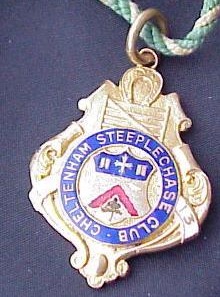
Cheltenham 1900-1910
At the turn of the century any betting on the permanent home of the National Hunt Challenge Cup Steeplechase was down to a field of two, even though in the first two years of the decade Burton Lazars and Kempton Park were selected. However, Warwick emerged as strong favourite, gaining the honour of hosts on no less than 7 occasions, while it was only run at Cheltenham twice. Then, in 1911, the Steeplechase Company (Cheltenham) Ltd were able to negotiate with the National Hunt Committee to make Prestbury Park Racecourse the permanent home of the race, and had the foresight to build a Festival of racing around the race.
What odds Cheltenham hosting the National Hunt Festival?
Organized steeplechasing in Britain in the early days generally consisted of local races organized by local groups, often innkeepers, landlords or hoteliers, run across fields, brooks and hedges, one of the earliest being the St Albans Steeplechase in 1830, which was won in 1831 by Moonraker. That race was organized by Thomas Coleman, owner of the Turf Hotel in St Albans, and the St Albans Steeplechase maintained its place at the forefront of steeplechase racing until 1839, the final year in which it was run when won by Mr Goodman's Perfection. William Lynn, owner of the Waterloo Hotel in the Aintree area of Liverpool, was one of the most successful entrepreneurs at this time, and certainly made the most of his opportunities. Up until 1834 the sport of cockfighting was intrinsically linked to race meetings, with cockpit owners staging cockfighting battles in the mornings and evenings where race meetings took place in the afternoon. The 12th Earl of Derby, Edward Smith-Stanley, one of the two men instrumental in launching the Epsom Derby, was even more enthusiastic about cockfighting, and despite fierce opposition to the sport, he used his position in the House of Lords to ensure that no Bill banning cockfighting was passed in his lifetime. However, he died in 1834, and in that same year Parliament passed a bill banning cockfighting. William Lynn, spotting a gap in the market, grasped his opportunity to boost revenue at his hostelry, and within 2 years had launched the Waterloo Cup coursing event at Altcar, in the vicinity of Aintree, and the Grand National at Aintree. Although, at that time, there was no officially recognized Committee to regulate National Hunt racing, similar to the Jockey Club, popular venues for the sport did begin to emerge which could have staged a 'Festival of National Hunt Racing' had someone with vision realized the potential to host such a Festival. Between 1830 and 1860 Cheltenham would not have been on the radar to host such a spectacle, and would not have featured highly in any betting list of potential 'Festival venues', with tongue-in-cheek odds being:-
5/2 St Albans, 3/1 Aintree, 4/1 Leamington, Vale of Aylesbury, Market Harborough, 5/1 Warwick, 100/1 Cheltenham.
In the early 1860s the National Hunt Committee was formed, eager to increase the popularity of National Hunt Racing, despite there being only about 300 jumps races in 1861. Given that the first unofficial Grand National at Aintree took place in 1836, with the first official Grand National taking place 3 years later in 1839, it was fully a quarter of a century before a nationwide body was formed to raise the profile of National Hunt racing in the country. They decided to launch a showpiece race, the National Hunt Steeplechase, later the National Hunt Challenge Cup Steeplechase, which was to be an annual race staged at different courses throughout the country to increase the visibility of the sport, and recognizing the success William Lynn had had in putting Aintree on the map, but at this stage the Committee probably did not fully appreciate the importance of making the race the centrepiece of a Festival. Between the 1860s and 1870s possible odds of potential 'Festival venues':-
2/1 Market Harborough, 3/1 Aintree, 5/1 Rugby, Warwick, 10/1 Burton Lazars, Bedford, 25/1 Cheltenham, Crewkerne, Wetherby
Ever anxious to extend the interest of the sport between the 1870s and the turn of the century, the National Hunt Challenge Cup Steeplechase was hosted at a wide range of venues in 3 of the 4 home nations, although the Committee would have been mindful of where the principal hunting regions were located at that time, and equally keen to centralise the venue to maximise the crowd size. Throughout those 3 decades, possible odds of potential 'Festival venues' would have fluctuated widely:-
4/1 co fav Aintree, Derby, Hurst Park, Sandown Park, 5/1 Warwick, 25/1 Bogside, Cardiff, Cheltenham, Lincoln, Newmarket
In the first decade of the 20th century just 4 venues were used to stage the National Hunt Challenge Cup Steeplechase, although two strong favourites to host the 'Festival' began to emerge:-
4/6 Warwick, 6/4 Cheltenham, 10/1 Kempton Park, 25/1 Burton Lazars
In 1911 Cheltenham won the race to host the National Hunt Racing Festival; the National Hunt Challenge Cup Steeplechase finding its permanent home at Prestbury Park.
Managing the Racecourse
Cheltenham Steeplechase Company
In the latter part of the 19th century, the Grand National was the spectacle which put National Hunt racing on the map, capturing the attention of the public whether they were regular racegoers or a once a year enthusiast. No other racecourse, and certainly not Cheltenham, could boast of a race with such wide appeal. The Grand Annual Steeplechase returned to Prestbury Park on Wednesday 13th April 1898, but the better known National Hunt Challenge Cup Steeplechase, dubbed the 'blue riband steeplechase for amateur riders', was not staged at Cheltenham until 1904 and 1905. Then, in 1908, the Cheltenham Steeplechase Company was formed, spearheaded by Frederick H Cathcart and Alfred Holman, with an ambitious plan to develop the racecourse, launch a building programme, and make Cheltenham the home of National Hunt racing. Pratt & Co, renowned racecourse managers since they were set up in 1860, joined the Steeplechase Company to manage the practicalities, including providing secretaries and inspectors, and continued as Secretary to the course until 1978. Alfred Holman, trainer and occupier at the time of Prestbury Park Farm, was rewarded for his part in the formation of the company by being appointed Starter, while Frederick H Cathcart became Clerk of the Course and Chairman. By 1911 the first officially recognised Cheltenham Festival was staged once the new course was set out; a new Grandstand had been opened 3 years earlier in May 1908.
It is worth noting a list of Officials in May 1908:- Stewards: Earl of Coventry, Sir W M Curtis, Lieutenant-Colonel J Watkins Yardley, Mr H Fane Gladwin, Mr W H P Jenkins, Mr H O Lord; Handicapper: Mr F W Wilmot; Judge: Mr St J Bell; Clerk of the Scales: Mr A Verrall; Starter: Mr Alfred Holman; Clerk of the Course: Mr Frederick H Cathcart; Secretary & Stakeholder: Messrs Pratt & Co
Racecourse Holdings Trust Ltd
In the early years of the decade of the 1960s there was widespread concern about the financial stability and survival of many firmly established racecourses throughout the country, and Cheltenham was certainly one which felt threatened. By the end of that decade 9 courses had closed their gates for the final time; Bogside (10/4/1965), Birmingham (21/6/1965), Buckfastleigh (27/8/1960), Hurst Park (10/10/1962), Lewes (14/9/1964), Lincoln (21/5/1964), Manchester (7/11/1963), Rothbury (10/4/1965), Woore (1/6/1963) and Cheltenham could well have been added to the list were it not for a brilliant initiative proposed by Johnny Henderson, father of the outstanding trainer Nicky Henderson, suggesting the formation of a new company, Racecourse Holdings Trust Ltd. He, along with 16 of his racing friends, sensed that the local council would support developers purchasing and building on racecourse land, and managed to thwart their efforts by forming a company to purchase the land from the Cheltenham Steeplechase Company instead. Fortunately, some of the land was owned by the Holland-Martin family who were keen National Hunt racing enthusiasts who wished to ensure that Cheltenham remained the home of the Festival. The Directors of the Cheltenham Steeplechase Company unanimously accepted the offer of £60 per share by Racecourse Holdings Trust Ltd, with a financial guarantee given by the Horsrace Levy Board, against which a bank and two insurance companies would lend the £240,000 required to complete the deal. At it's formation the share capital of RHT was £2000 divided into £1900 of ordinary shares and 100 deferred shares of £1 each, with a guarantee that no dividends would be paid, but any profits would be reserved for investing in the further development of the course, The Chairman of the Cheltenham Steeplechase Company, Lord Willoughby de Broke, saw this process as the first step in ensuring the future of a number of courses, which, in turn, would help the development of racing throughout the country. Amongst the first Directors of Racecourse Holdings Trust Ltd were Hon J P Philipps, who acted as Chairman, Lord Norrie, Johnny Henderson and Edward Holland-Martin.
Manager (on-site) or Managing Director
1908-1942 William Kidd, who was on-site racing manager for 34 years, but died on Thursday 22nd January 1942 aged 61
1942-1950 Charles Reginald Walters
1971-1973 Michael Reinhold, at the time of appointment a 27-year-old chartered surveyor
1974-1979 Jack Bennett
1980-2012 Edward Gillespie
2012-2023 Ian Renton
Racecourse Chairman
1908-1934 Frederick Henry Cathcart (see personal details below)
1957-1971 Lord Willoughby de Broke
1971-1973 John Henry, 5th Marquis of Abergavenny, succeeded Lord Willoughby de Broke having been a Director of the Cheltenham Steeplechase Company since 1952
1973-1980 Major General Sir Randle Guy Feilden
1980-1990 Captain Miles Gosling
1990-2011 Lord Sam Vestey
2011-2019 Robert Waley-Cohen
2019-present Martin St Quinton
Clerk of the Course
1908-1928 Frederick Henry Cathcart, born in 1859, was widely regarded as the man who masterminded the development of Cheltenham Racecourse, transforming it into the home of National Hunt racing and, in particular, the Cheltenham Festival. He joined the management of Pratt & Co in 1895, moving up the ranks to become a senior partner, and was appointed Chairman and Clerk of the Course at Cheltenham Racecourse in 1908. He recognised the importance of signature races, initiating the Cheltenham Gold Cup in 1924 and, three years later, introduced the Champion Hurdle in 1927. It was characteristic of the man that as soon as one Festival was completed, he began consulting with builders and architects as to how the course could be further extended and improved. He lived at Three Gables, Marlow, Bucks, remaining a stalwart at Cheltenham until his death in February 1934, aged 74, having relinquished the post of Clerk of the Course to his nephew, Frederick R Cathcart, in 1928. He also played a leading role in the management of other southern racecourses, notably Gatwick, Alexandra Park, Folkestone and Plumpton.
1928-1934 Frederick Rolleston Cathcart, nephew of Frederick Henry Cathcart, was born in 1900 and died on 4th March 1934. He was Clerk of the Course at Cheltenham Racecourse for 6 years between 1928 and 1934, having taken over the responsibility from his uncle who remained Chairman of the Course until his death in February 1934. Both Cathcart's lived at Marlow-on-Thames at the time of their deaths within a month of each other. Frederick R Cathcart was also a Director of Gatwick, Lewes, Folkestone and Fontwell Racecourses.
1934-1951 Mr E E Robinson
1952-1958 Major C R Wigney, who died at Hove on Saturday 4th April 1959 aged 68 having previously served in the Army during the First World War, and then worked for Pratt & Co. racecourse managers, stakeholders and secretaries.
1959-1974 Dennis Bushby
1975-1977 Charles Toller
1977-1999 Major Philip Arkwright
1999-2022 Simon Claisse
2022-present Jon Pullin

Present Day Programme
The diagram below shows the 28 races that currently make up the 4-day Cheltenham Festival, each jigsaw piece indicating the various names which the races have taken over the years, with a watermarked Heart showing races traditionally held on the opening day (Tuesday), Clubs showing races traditionally staged on the second day (Wednesday), Diamonds showing races traditionally taking place on the penultimate day (Thursday), and Spades indicating races occurring on the final day (Friday).

What might have been
Spare a thought for what might have been. All of the races listed below at one time formed a part of a Festival Racecard, but would the Festival have held its current universal appeal if the following 4-day card was presented to the public?
Cleeve Selling Hurdle (2 miles)
National Hunt Moderate Chase (2 miles)
Gloucester Maiden Hurdle (2 miles)
Southam Selling Chase (2 miles)
Swindon Hurdle (3 miles)
Croome Hunters Chase (3 miles 4 furlongs)
Maiden 5-y-o Chase (2 miles)
Birdlip Selling Hurdle (2 miles)
Coventry Cup Chase (2 miles)
George Duller Handicap Hurdle (3 miles)
Swindon Selling Chase (3 miles)
High Class Hurdle (2 miles)
Prestbury Handicap Chase (2 miles)
Cleeve National Hunt Flat Race (2 miles)
Thursday
Bredon Selling Handicap Hurdle (2 miles)
Coventry Handicap Chase (2 miles)
Rose Hill Handicap Hurdle (2 miles)
United Services Cup (3 miles 4 furlongs)
Newent Selling Chase (2 miles)
Open Military Handicap Chase (3 miles)
Seven Springs Handicap Chase (2 miles 4 furlongs)
Lansdown Selling Handicap Hurdle (2 miles)
National Hunt Juvenile Chase (2 miles)
Croome Hurdle (2 miles)
United Hunts Challenge Cup (3 miles 4 furlongs)
Spa Handicap Steeplechase (2 miles)
High Flyer Selling Chase (3 miles)
Cotswold National Hunt Flat Race (2 miles)
The layout of the Old, New and Cross-Country racecourses used at the Festival meeting are shown below together with a chronological list of the races in date order. Each of the 2 diagrams are ©Tony Bostrom 2024 and ©John Slusar 2024.



The Amateur Riders Chase was launched soon after the end of the First World War in 1920 and was initially contested over 2 miles 110 yards when won by Free Gift. In 1923 it was won by Dudley, but in 1924 it was increased to 3 miles. The race remained part of the programme until 1929.
Early history:-The inaugural running of the Amateur Riders Chase was on Wednesday 10th March 1920, was won by Mr R Llewellyns Free Gift (5/1) trained by Newey and ridden by Mr Gibson, beating Rough and Ready (7/4 fav) and Sea Toiler (4/1).
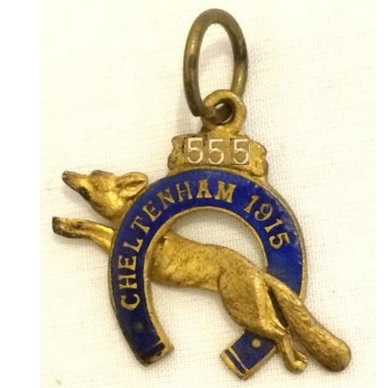


Early history:-The inaugural running of the Arkle Challenge Chase took place on Wednesday 19th March 1969 and was won by Chatham (10/1) trained by Fred Rimell and ridden by Terry Biddlecombe, beating Straight Fort (5/1) and King Dolphin (20/1) by 2 lengths and 8 lengths.
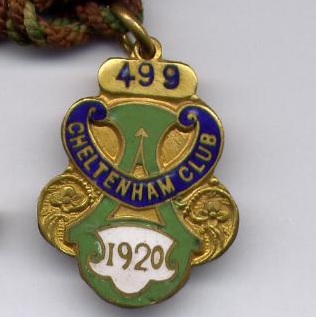

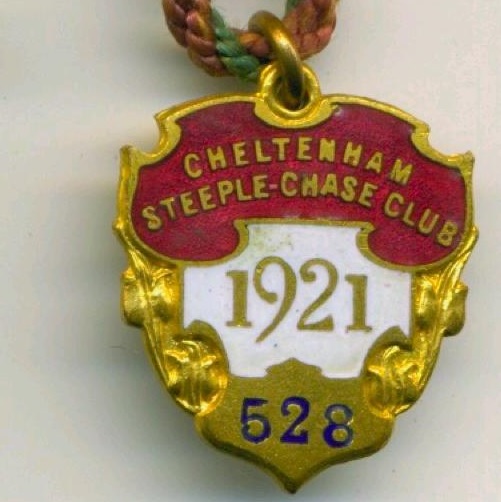
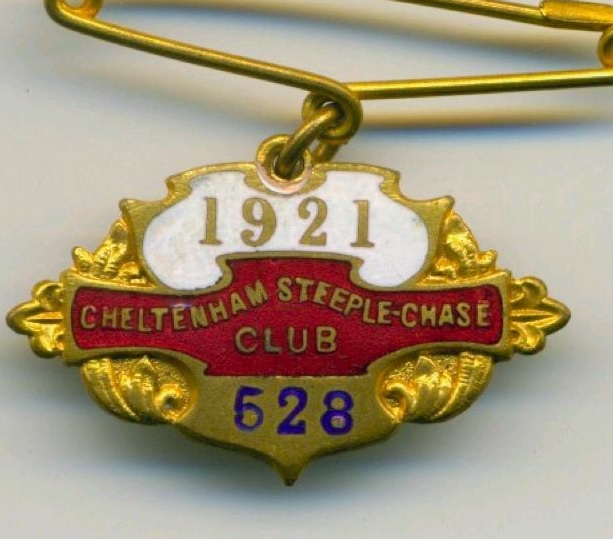

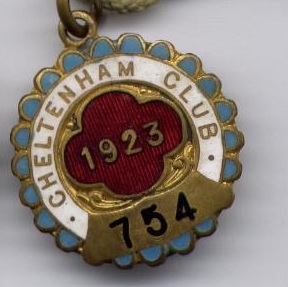
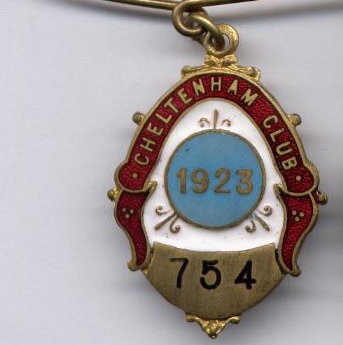
The Birdlip Selling Hurdle first took place as a 2-mile selling hurdle at the 1952 Festival and continued to be run over that distance for the next 6 years, but in 1958 it was extended to 3 miles. Prior to 1952 the Birdlip Selling Hurdle and Birdlip Selling Steeplechase had, from time to time, been a part of the April meeting. The Birdlip Selling Chase was run annually up to 1939, but after the war the Birdlip Selling Hurdle was occasionally run at that April meeting, although in 1950 it was earmarked to make its debut on the Wednesday of the Festival meeting unless a race had to be divided. A race was divided, and two more years elapsed before it took its place on the Festival card. On the third anniversary of the race it was won by Mull Sack, a rare hurdle victory for Lester Piggott, and when it was run for the final time in 1962 it was won by St Stephen ridden by Fred Winter, who later celebrated so many victories as a trainer. In 1963 the Birdlip Hurdle was replaced by the George Duller Hurdle which, in due course, was replaced by the Pertemps Hurdle.
Early history:- The inaugural running of the Birdlip Selling Hurdle took place on Wednesday 5th March 1952 when won by Dankali (7/2) trained by W Pearson and ridden by Mr J K Oliver, beating Michael Collins (20/1) and Rouge Et Noir (100/9) by 4 lengths and a neck.
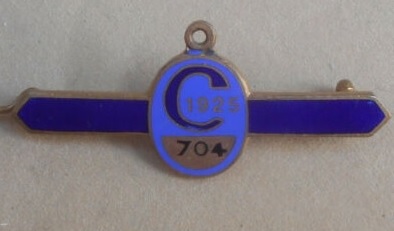

The Bredon Selling Hurdle over 2 miles was introduced into the Festival programme in 1923 when the event was extended to 3 days, and took place on Thursday 8th March 1923. It remained part of the programme for the next 3 years before being dropped after the 1926 Festival.
Early history:-The inaugural running of the Bredon Selling Hurdle over 2 miles took place on Thursday 8th March 1923 when won by Pacifist (10/1) owned by Mr Moore, trained and ridden by J Horgan jnr, beating Pavot (7/1) and Gallesian (100/8) by a short head and 3 lengths.

Early history:-The inaugural running of the Broadway Novices Steeplechase over 3 miles was staged on Thursday 3rd March 1921 when won by Habton (11/8 fav) owned by Mr V Thompson, trained by F Hartigan and ridden by G Smith, beating Lord Coventry's Dart (20/1) and Major Cayzer's Irish Light (7/2) by 8 lengths and the same.
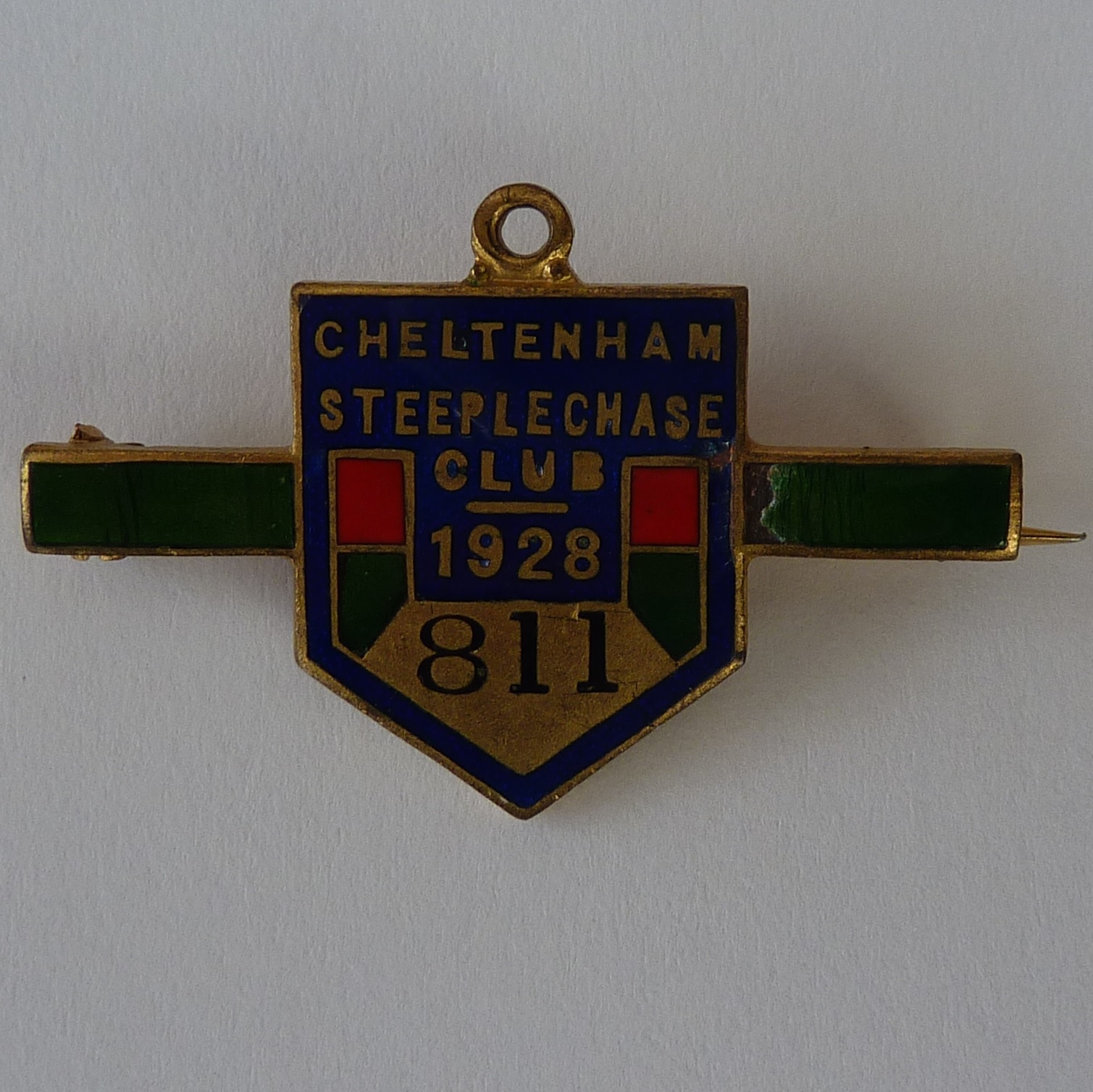
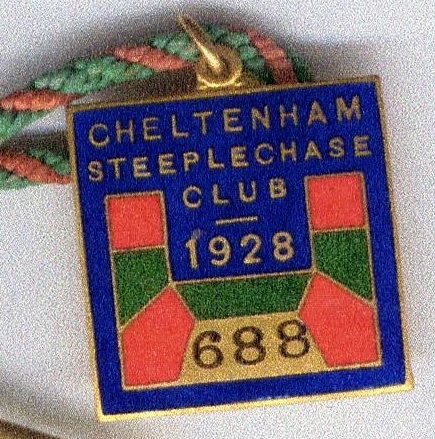



The Cathcart Challenge Cup Chase, introduced into the Festival programme in 1938 to commemorate the extraordinary contribution which Frederick Cathcart had made in bringing about the Cheltenham Festival, had run until 1974, but in 1975 it was replaced by the Cathcart Champion Hunter Chase Challenge Cup for 3 years, although the 1975 meeting was abandoned. Frederick Cathcart was Chairman of Cheltenham and Clerk of the Course between 1908 and 1934, so it was unfortunate that this new race had to be abandoned in its first year, but the 2 subsequent runnings were won by Mickley Seabright and Rusty Tears, after which the race reverted to its original name in 1978, which was another abandoned meeting.
Early history:- Although the inaugural event was meant to take place at the 1975 Festival, it had to be abandoned, so the first time the race was actually run was on Thursday 18th March 1976 over 3 miles 1 furlong and a few yards, winding up that year's Festival, and was won by Mickley Seabright (6/4 fav) trained by Fred Rimell and ridden by Mr P Brookshaw, beating Stanhope Street (9/1) and Tartan Slave (8/1) by 12 lengths and a neck.
The Centenary Novices Handicap Chase run over 2 miles 4 furlongs and 10 yards and 16 fences was first run in 2005 when the race was sponsored by Jewson and named the Jewson Novices Handicap Chase. At the 2011 Festival the sponsors Jewson decided to sponsor a new race, the Jewson Novices Chase which became the Golden Miller Novices Chase, and more recently the Turner Novices Chase, while the former race became known as the Centenary Novices Handicap Chase to celebrate the 100th anniversary of the Cheltenham Festival. This race continued as part of the Festival card until 2020 and was transferred to Sandown Park in 2021.
Early history:-The Jewson Novices Handicap Chase, which morphed into the Centenary Novices Handicap Chase, was first contested on Thursday 17th March 2005 over 2 miles 5 furlongs and was won by King Harald (9/1) owned by P J D Pottinger, trained by Mark Bradstock and ridden by Mattie Bachelor, beating Lacdoudal (12/1) and See You Sometime (12/1).
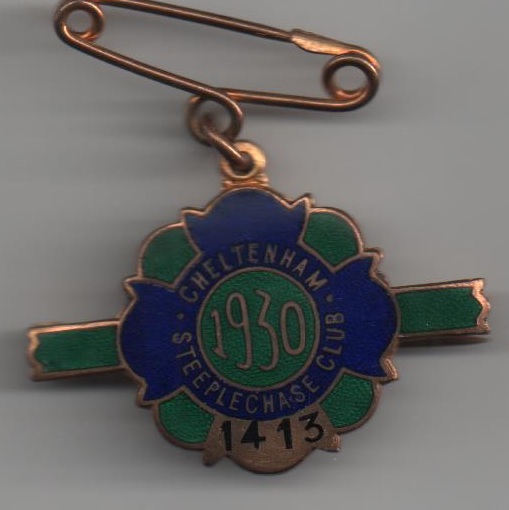
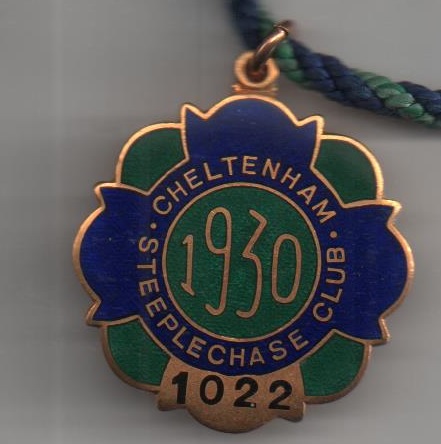


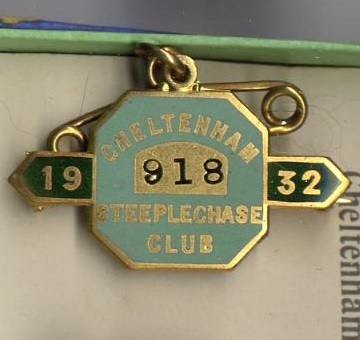

Early history:-The inaugural Champion Bumper (Tote Festival Bumper National Hunt Flat Race) was staged on 12th March 1992 when won by Montelado (8/1) trained by Patrick J Flynn (Ire), ridden by Richard Dunwoody, beating Tiananmen Square (6/4 fav) and Maneree (7/1) by 12 lengths and 10 lengths.

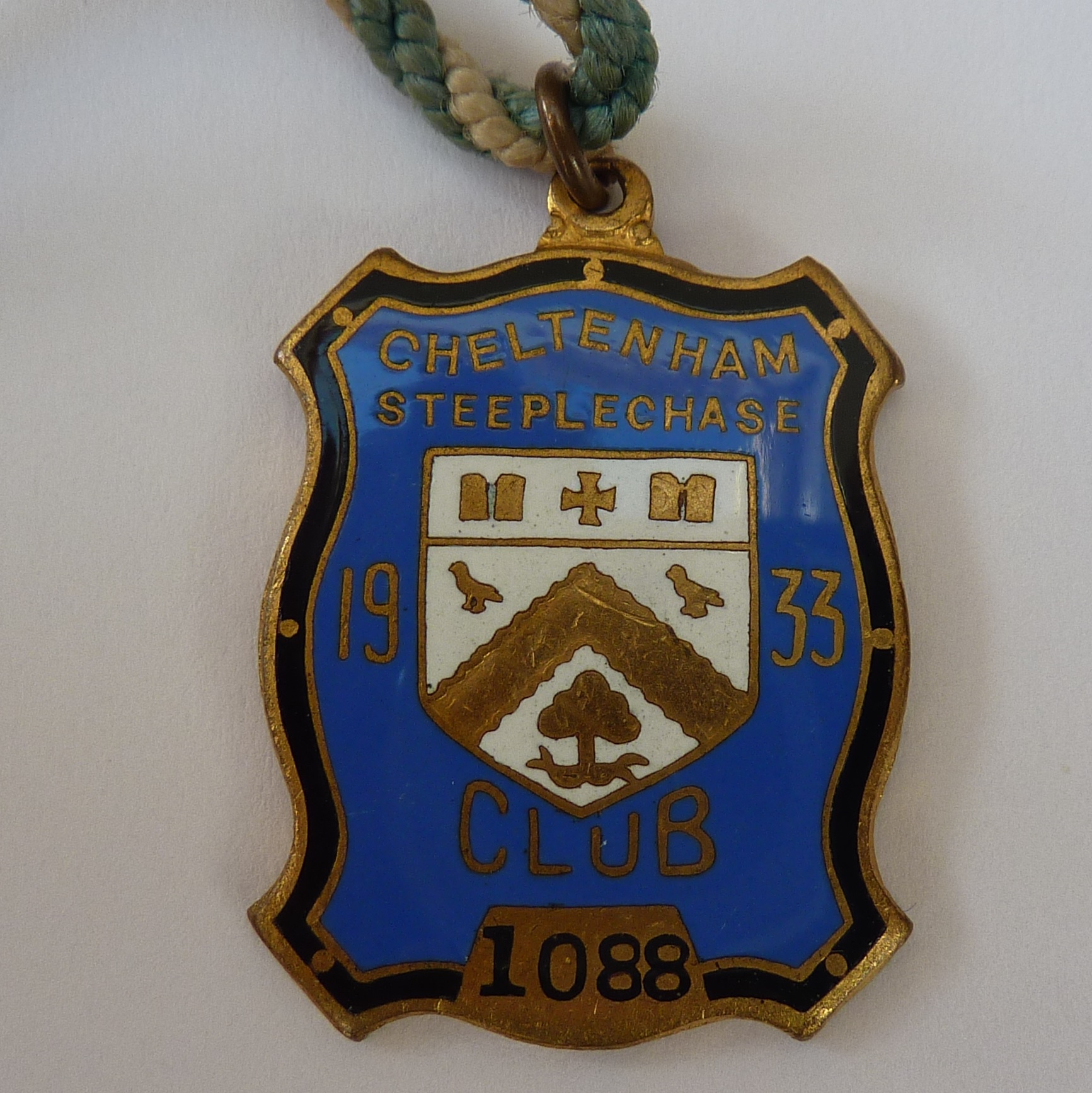
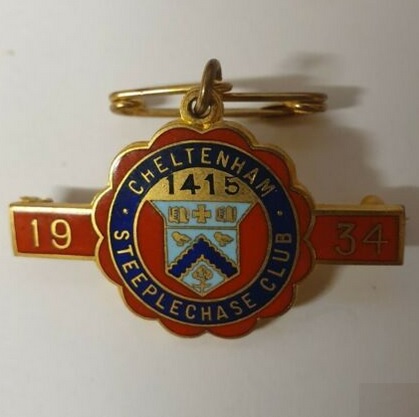

Early history:-The inaugural running of the Champion Hurdle took place on Tuesday 9th March 1927 when won by Blaris 11/10 fav owned by Mrs H Hollins, trained by Bill Payne and ridden by George Duller, beating Beddam (7/2) and Harpist (9/4) by 8 lengths and one length.
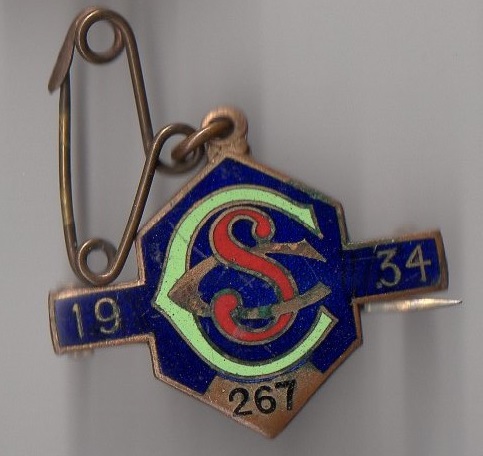
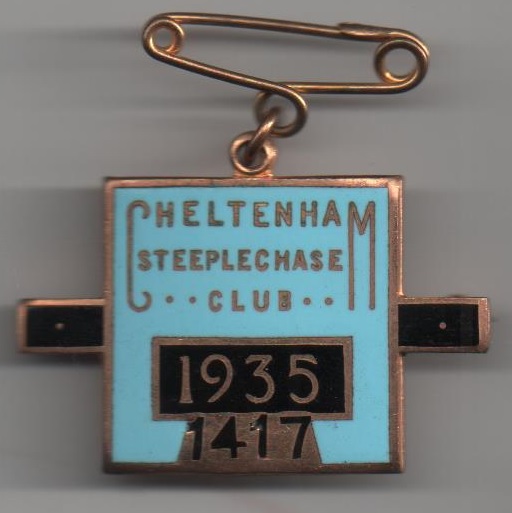
The Cheltenham Chase, contested over 2 miles and 100 yards, was staged for just one year in the first Festival in 1911.
Early history:- The only running of the Cheltenham Steeplechase was held on Thursday 9th March 1911, worth 400 sovereigns, and saw Viz (evens fav) owned by Mr G D'Arcy Edwardes, trained by P Hartigan and ridden by H B Bletsoe, defeat Clockwork II (5/1) and Schomville (100/8) by 15 lengths and a distance.
The Cleeve National Hunt Flat Race over 2 miles, worth 200 sovereigns, was first run on Wednesday 12th March 1924 and continued for just 3 more years, with the final race being worth £415.
Early history:- The inaugural Cleeve National Hunt Flat Race was held on Wednesday 12th March 1924 over 2 miles and saw Blaenor (9/2) owned by Mr H Peel, trained by H Hartigan and ridden by Major Doyle, defeat Ditchley (6/1) and Phaco (4/1 jt fav) by 3 lengths and 3/4 length.
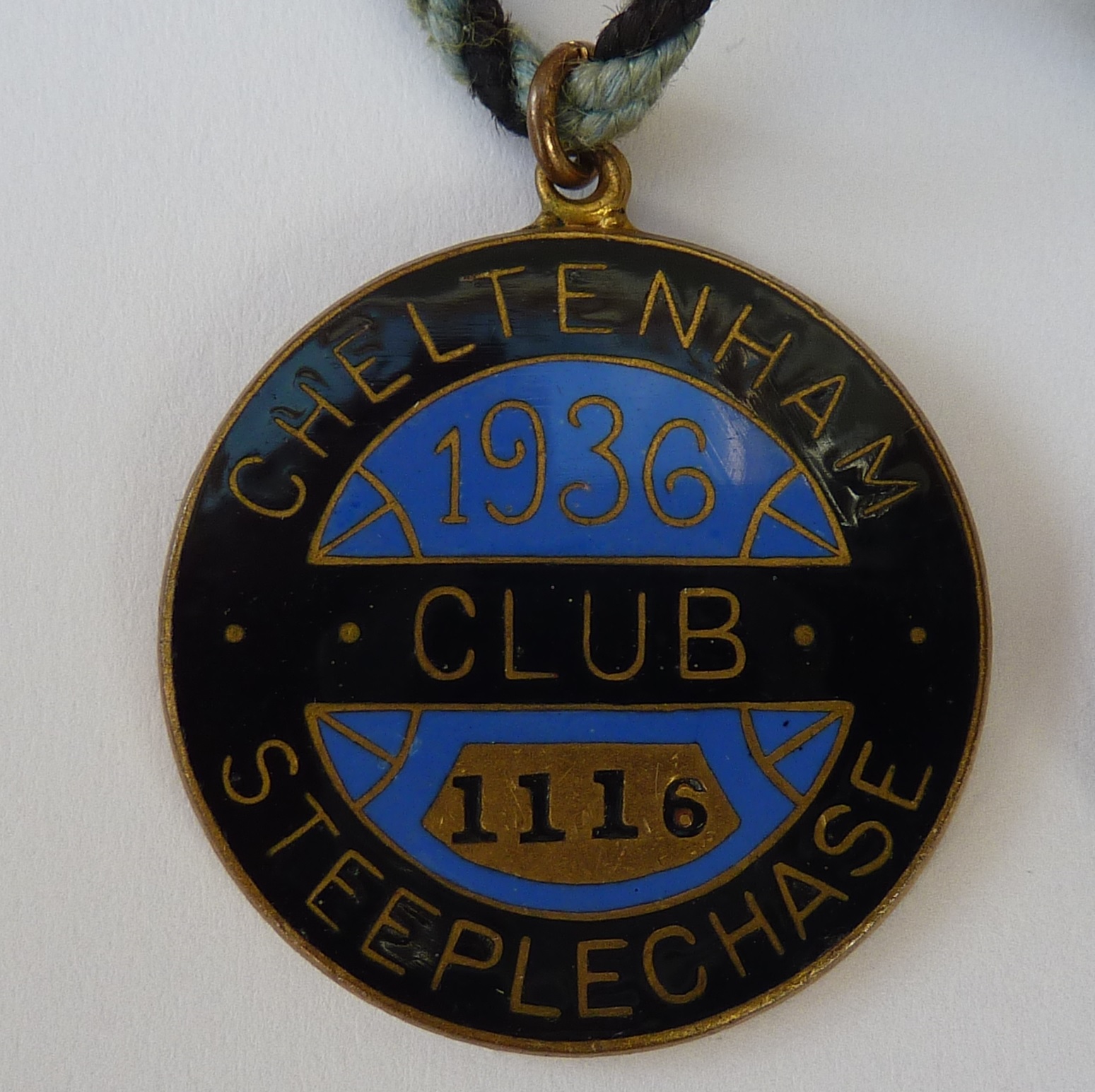

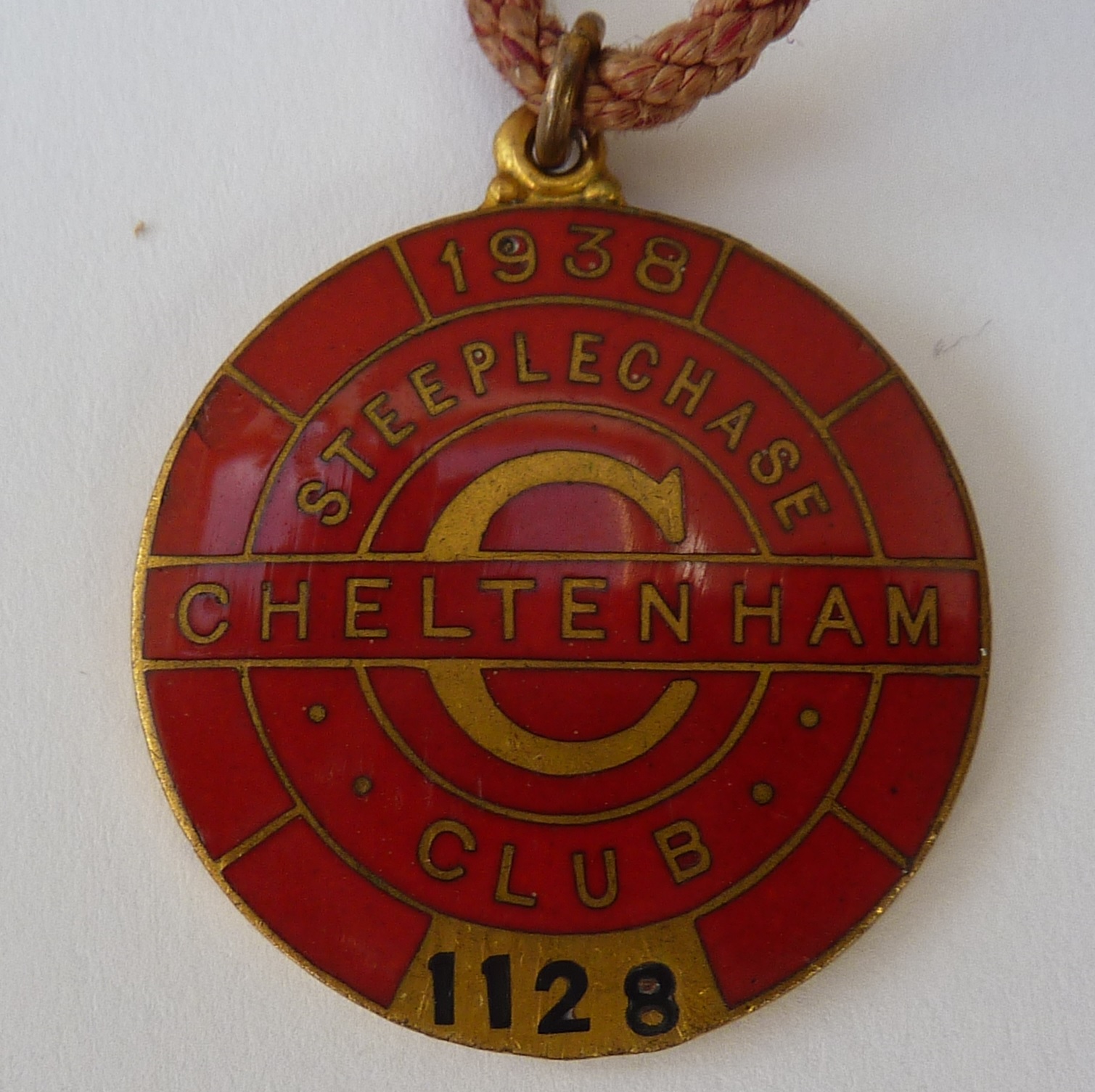
The Cleeve Selling Hurdle over 2 miles was held at the very first Festival in 1911 when won by Aftermath who went on to win the Stayers Selling Hurdle at the 1912 Festival. The Cleeve Selling Hurdle continued to be part of the programme on 7 further occasions, finally being dropped from the card after the 1923 running.
Early history:- The inaugural running of the Cleeve Selling Hurdle was as the opening race on Thursday 9th March 1911 when Aftermath (7/2) owned by Mr C Atherton Brown, trained by R Payne and ridden by Bill Payne beat Espanol (4/1) and Barbarossa (2/1 fav) by 5 lengths and 6 lengths.
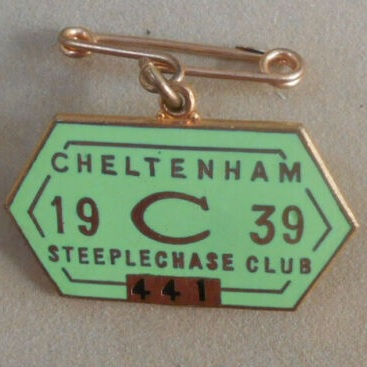
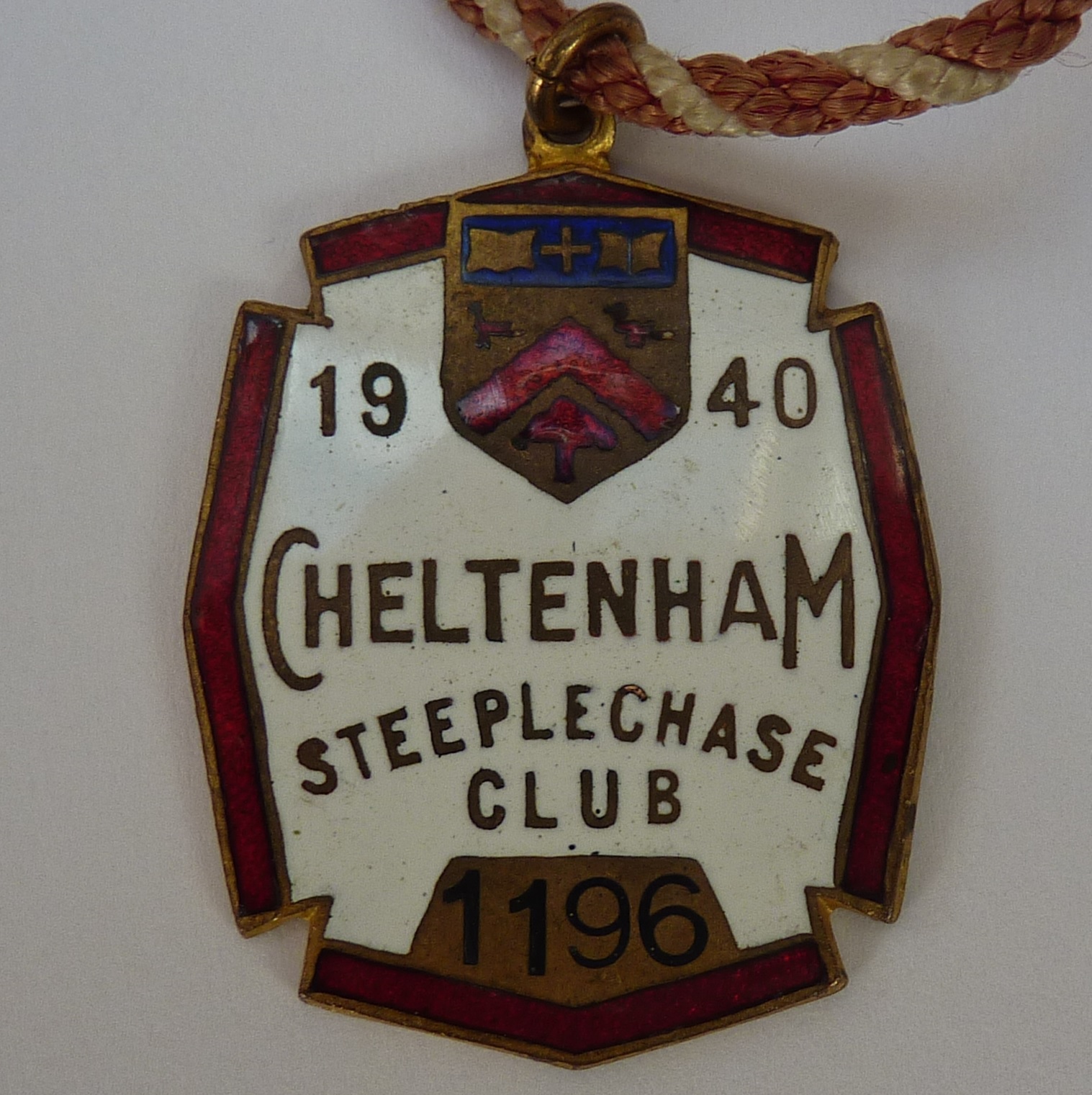
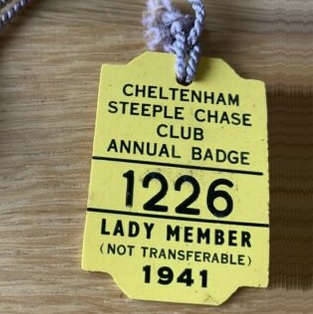
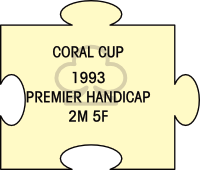
Early history:-The inaugural running of the Coral Cup took place on 17th March 1993 over 2 miles 5 furlongs and 26 yards and was worth £36,546 to the winner. It was won by the Martin Pipe trained Olympian (4/1 jt fav) ridden by Peter Scudamore, beating Sillars Stalker (20/1) and Yellow Spring (20/1) by 2 ½ lengths and 5 lengths to claim a £50,000 bonus having won the previous Saturday's Imperial Cup.
The Cotswold National Hunt Flat Race over 2 miles was part of the first Festival meeting in 1911 when won by Early Closing owned by Mr W T Drake. The race formed part of the card on 5 further occasions, but was staged for the final time at the 1921 Festival.
Early history:- The inaugural running of the Cotswold National Hunt Flat Race over 2 miles was worth 200 sovereigns and took place on Tuesday 8th March 1911 as the second race on the opening day of the very first Festival. It was won by Mr W T Drake's Early Closing (11/8 fav) trained by Emerson and ridden by Mr Drake, beating Wingfield (10/1) and Rex (7/2) by 3 lengths and the same.

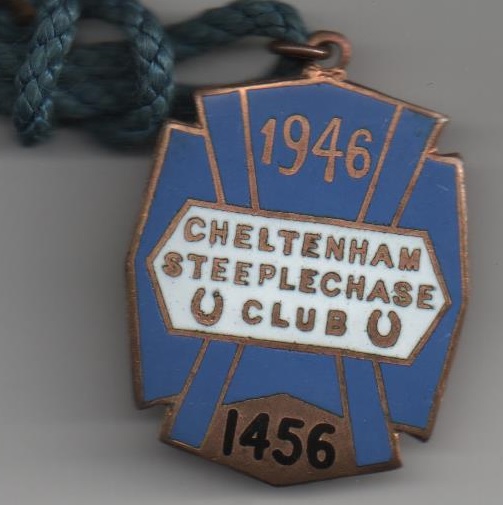

The Coventry Cup Chase over 2 miles first became a part of the Festival programme in 1928 and developed into a recognised two-mile championship, although it never reached the heights of the later Queen Mother Champion Chase. It was plagued by small fields and even a walk-over in 1934, although the 1927 Champion Hurdle winner Blaris did go on to land the 1930 Coventry Cup Chase. The race was finally dropped from the card after the 1936 running.
Early history:-The inaugural running of the Coventry Cup Chase took place on Wednesday 14th March 1928 over 2 miles and was won by Lord Londesborough’s Dudley (5/1) trained and ridden by Mr H Brown, beating Grackle (6/1) and Canopus (4/1) by a length and 4 lengths.

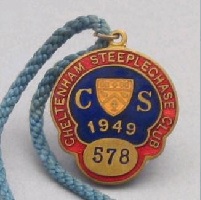
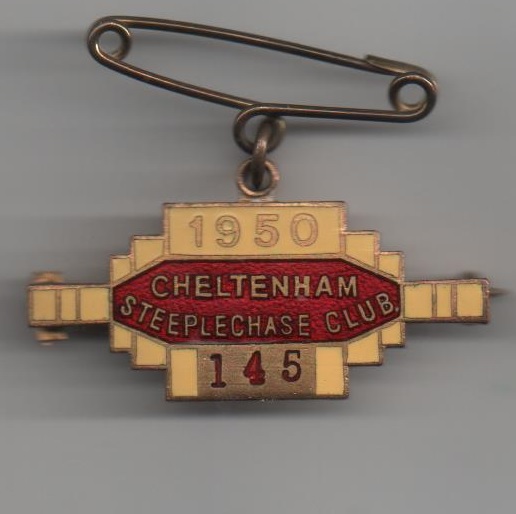
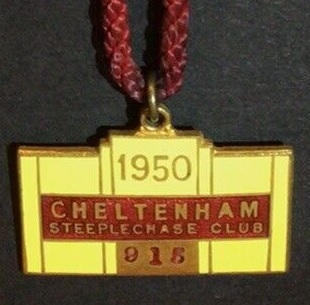
The Coventry Handicap Chase, worth 500 sovereigns, was a short-lived part of the Festival programme having been staged just once in 1915. It was contested over 3 miles 2 furlongs and was won by Mr F C Parker's Lamentable (11/2) partnered by Walkington.
Early history:-The only running of the Coventry Handicap Chase took place on Thursday 11th March 1915 over 3 miles 2 furlongs and went to Mr F C Parker's Lamentable (11/2) trained by Kelly and ridden by Walkington, beating Queen Imaal (5/1 jt fav) and Hackler's Bey (11/2) by a short head and 10 lengths.
The only running of the Croome Hurdle formed part of the revised Festival meeting in 1947 when the traditional March meeting had to be abandoned, but it was rejigged into a 3-day meeting, 8 races on each day, on Saturday 12th, Monday 14th and Tuesday 15th April 1947. The Croome Hurdle formed a significant part of that revised programme because it was run in 4 divisions, division 1 on the Saturday, and divisions 2, 3 and 4 on the Tuesday. In theory, only the Saturday meeting could be classed as a part of the Festival because the other 5 races on that card were the principal races of the meeting, including the Gold Cup, Champion Hurdle, Foxhunters Chase and National Hunt Steeplechase.
Early history:- The first division of the Croome Hurdle took place on Saturday 12th April 1947 when won by Montignac (7/4 fav) ridden by R Bates, beating Cape Light (4/1) and Trucebreaker (6/1) by a length and 6 lengths. Three further divisions were held on Tuesday 15th April 1947, but the race was not held at the Festival in subsequent years.
The Croome Hunters Chase over three and a half miles was part of the very first Festival in 1911 but was not staged again afterwards. It was won by Chapilizod who went on to win the Foxhunters Chase two years later.
Early history:- The Croome Hunters Steeplechase for 100 sovereigns over 3 and a half miles was held on Wednesday 8th March 1911 as the final race on the card and was won by Captain J Paynter's Chapilizod (4/1) trained by W Taylor and ridden by Captain Paynter, beating The Viscount II (10/1) and Vesper Bell (10/1) by 5 lengths and 4 lengths.

Early history:- The inaugural running of the Cross Country Chase, sponsored by Sporting Index, took place on 15th March 2005 and was won by the J P McManus owned Spot The Difference (4/1) trained by Enda Bolger and ridden by J T McNamara, beating Luzcadou (22/1) and Mrs Be (20/1) by two and a half lengths and 6 lengths.
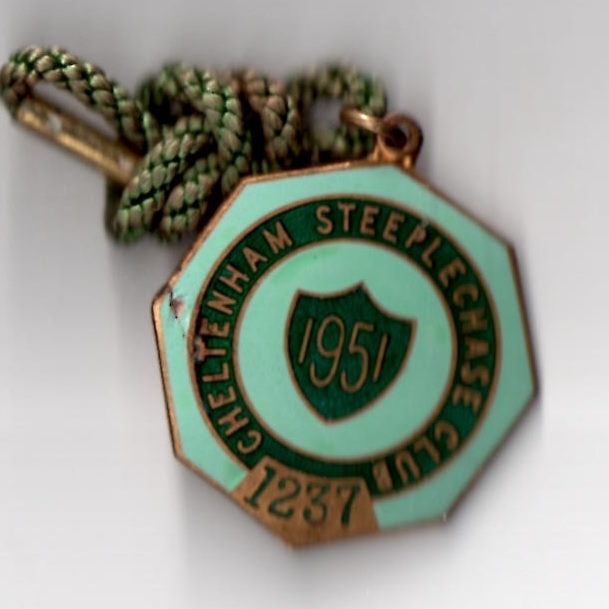
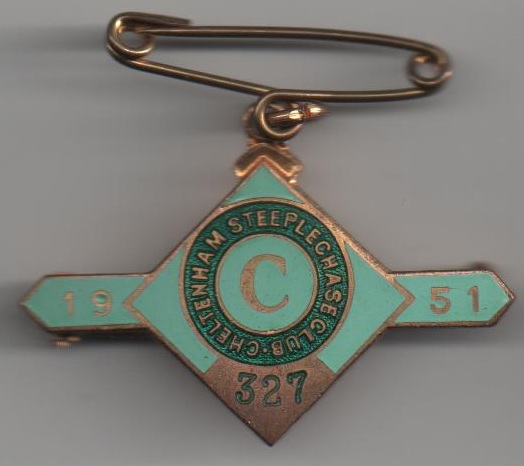






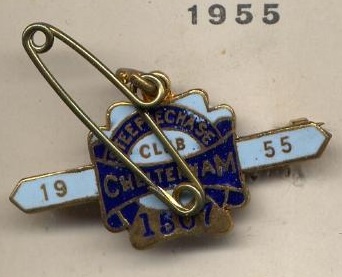
The Pertemps Hurdle over 3 miles was first run as the Birdlip Hurdle in 1958, which was itself replaced by the George Duller Handicap Hurdle in 1963, named in honour of the ace jockey who later turned his hand equally successfully to motor racing. The George Duller Hurdle ran from 1963 to 1973, and was so popular that it had to be divided into two divisions in 1969. In 1974 it was moved to the April meeting, its place being taken by a similar 3-mile hurdle known as the Joe Coral Golden Hurdle Final, and later the sponsorship was taken over by Pertemps.
Early History:- The inaugural running of the George Duller Handicap Hurdle over 3 miles, which replaced the Birdlip Hurdle, took place on Wednesday 13th March 1963 and went to Happy Arthur (4/1 fav) owned by Major A Gibson, trained by J Oliver from Hawick and ridden by Tim Brookshaw, beating Gideon (100/7) and Black Caprice (10/1) by 8 lengths and the same.
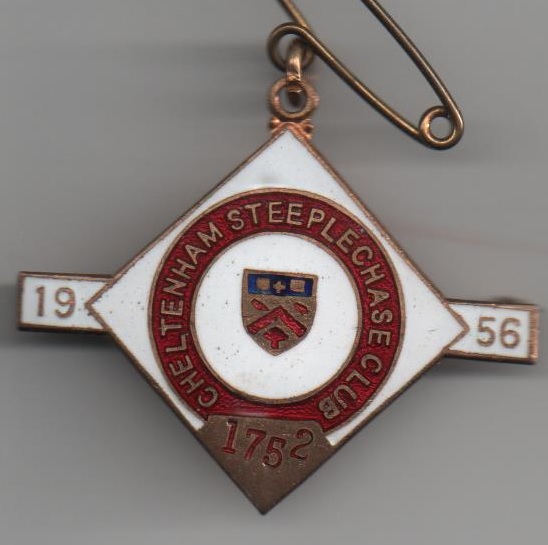
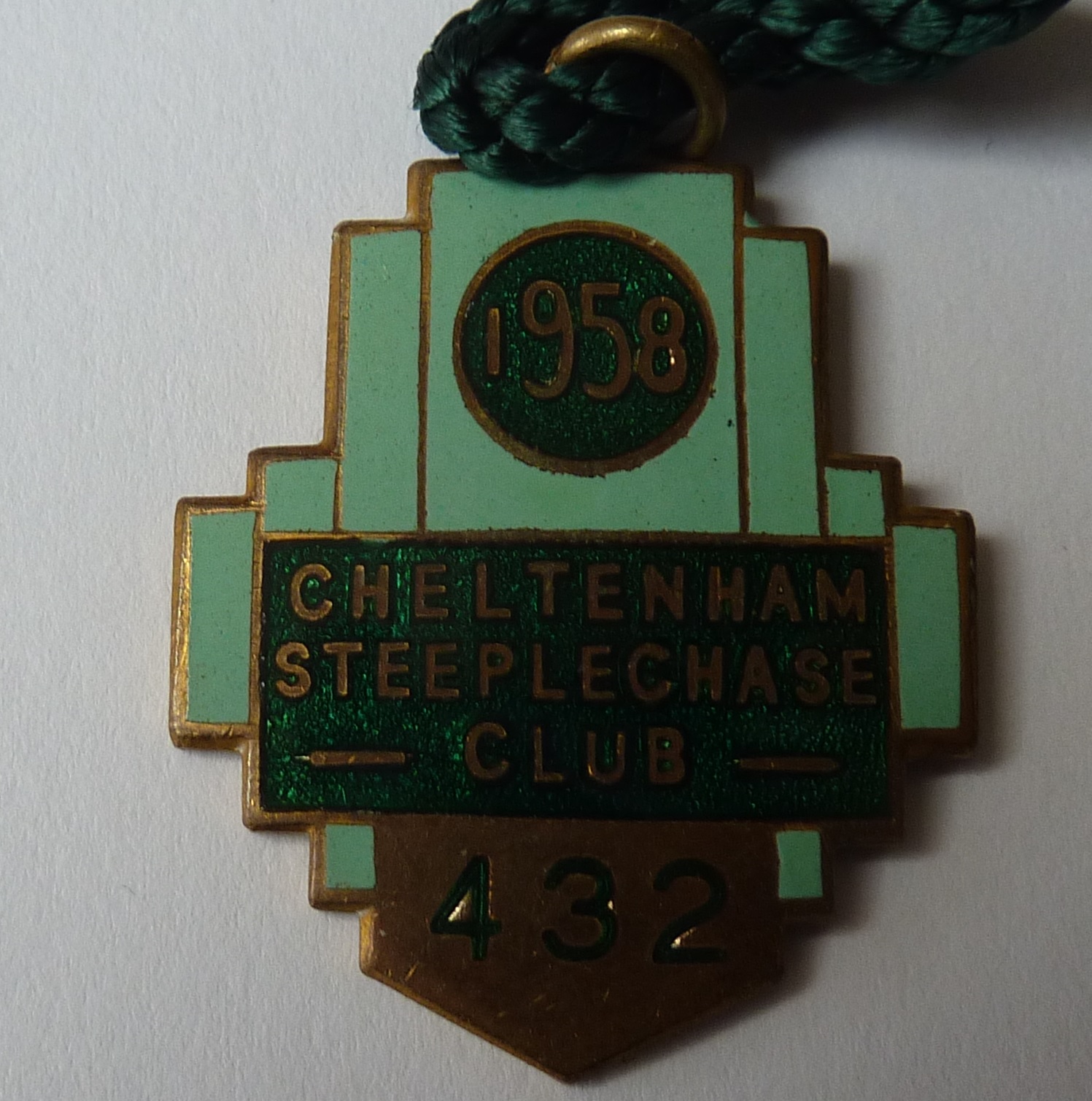
The first running of the Gloucestershire Maiden Hurdle over 2 miles took place at the very first Festival in 1911 and was won by Ugbrooke owned and trained by Tom Cannon. It was a disappointing, non-competitive race with just 2 runners and was won by a distance. The race continued to be known as the Gloucestershire Maiden Hurdle up to 1919, but in 1920 it was named the Gloucestershire Hurdle, although still for maidens at closing, and that race eventually morphed into the Supreme Novices Hurdle.
Early History:- The Gloucestershire Maiden Hurdle over 2 miles was run at the 1911 Festival on Thursday 9th March 1911 when Ugbrooke (10/11 fav) owned and trained by Tom Cannon and ridden by C Hathaway beat his sole opponent La La (evens) by a distance.

Early history:- The inaugural running of the Gold Cup was on 12th March 1924 over 3 miles 3 furlongs and was won by Red Splash (5/1) owned by Major Humphrey Wyndham, trained by Fred Withington and ridden by Dick Rees, beating Conjuror II (7/1) and Gerald L (5/1).
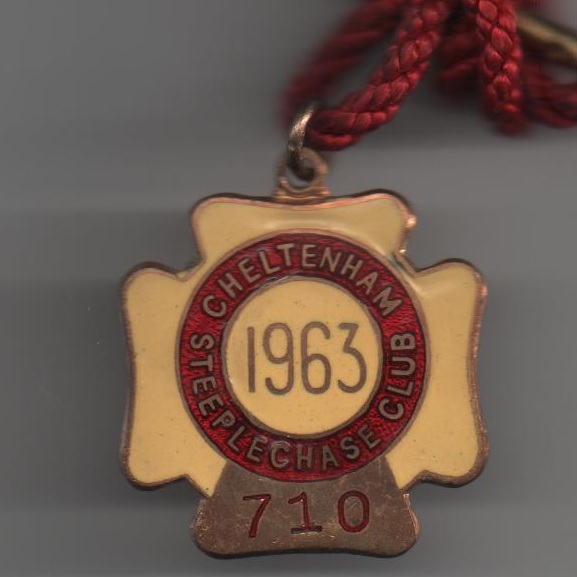

Early history:- The Jewson Novices Chase, which morphed into the Golden Miller Novices Chase, was first contested on Thursday 17th March 2011 over 2 miles 4 furlongs and 16 fences was won by D P Sharkey's Noble Prince (4/1) trained by Paul Nolan and ridden by A P McCoy, beating Wishful Thinking (7/2 fav) and Loosen My Load (11/2) by 4 lengths and 5 lengths.

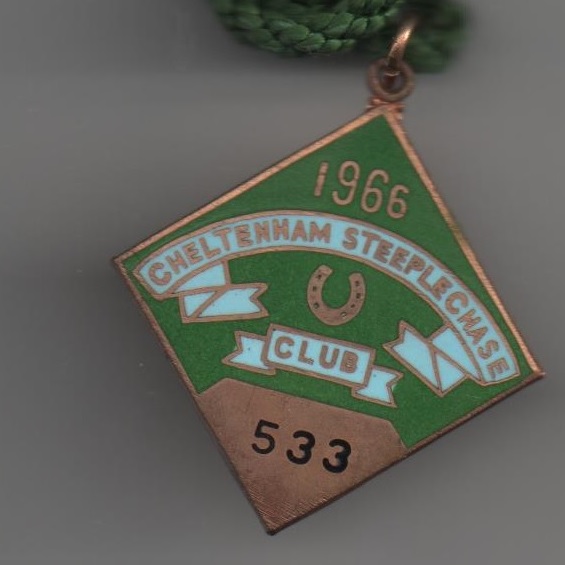

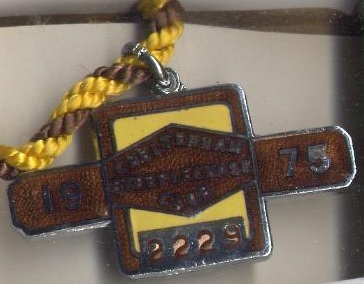
The High Class Selling Hurdle, a race over 2 miles and a few yards, was part of the Festival programme for just one year, 1946 when won by Flying Mascot (10/1) ridden by P Canty.
Early history:- The only running of the High Class Selling Hurdle 200 sovereigns over 2 miles and a few yards took place on Wednesday 13th March 1946 and was won by Flying Mascot (10/1) ridden by P Canty, beating Gain (100/8) ridden by P Lay and Rehoboam (7/4 fav) ridden by D Butchers.
The High Flyer Chase, a selling chase over 3 miles, was only part of the Festival for one year, 1946, and was won by Lavenham (5/1) ridden by Bryan Marshall.
Early history:-The only running of the High Flyer Chase over 3 miles took place on Tuesday 12th March 1946 when won by Lavenham (5/1) ridden by Bryan Marshall, beating Urambo (7/1) and Typhoon (20/1).


The Jubilee Handicap Hurdle over 2 miles 2 furlongs was part of the Festival programme for just one year 1912, when worth a 1000 sovereigns and won by Fleeting Peace ridden by H Ussher. It was replaced by the County Hurdle in 1913, which was run over the same course and distance and worth exactly the same amount in prize money.
Early history:-The only running of the Jubilee Hurdle for 1000 sovereigns over 2 miles 2 furlongs took place on Thursday 13th March 1912 and was won by Fleeting Peace (7/1) owned by Mr B W Parr, trained by Ussher and ridden by H Ussher, beating Ballymac (100/6) ridden by W Escott and Exhilerate (9/4 fav) by 6 lengths and a neck.

Early history:-The inaugural running of the Fred Winter Juvenile Novices Handicap Hurdle took place on 15th March 2005 when won by Donal Patrick O’Gorman's Dabiroun (20/1) trained by Paul Nolan and ridden by Ms Nina Carberry, beating At Your Request (33/1) and Nation State (7/1).
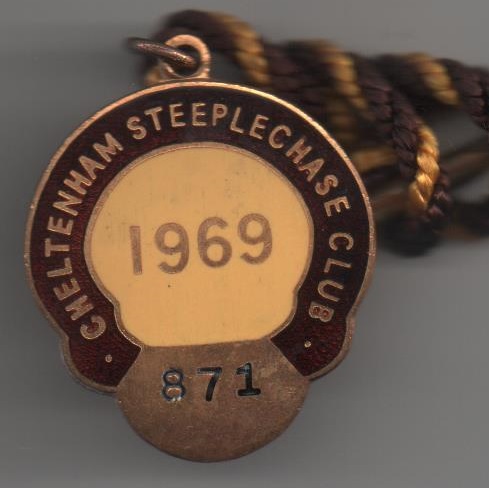

Early history:-The Kim Muir Amateur Raiders Steeplechase, which eventually morphed into the Kim Muir/Fulke Walwyn Chase, was first run on Thursday 14th March 1946, and was won by Astroniete (5/4 fav) owned by Miss Dorothy Paget, trained in Ireland and ridden by Captain Dennis Daggeley, beating Post Horn (100/8) and Holbein (11/2).
The Lansdown Selling Handicap Hurdle was introduced into the 1928 Festival and was won by Anarchist in 1942, the horse having been beaten a head by Seneca in the 1941 Champion Hurdle, and went on to run second, beaten 3 lengths, by Forestation in the 1942 Champion Hurdle.
Early history:-The inaugural running of the Lansdown Selling Handicap Hurdle took place on Thursday 15th March 1928 when won by Zeus (10/1) owned by Mrs Thompson, trained by T Webb and ridden by E Green, beating Langside (5/2) ridden by Staff Ingham and Cabriolet (20/1) ridden by J Middleton by 3 lengths and one and a half lengths.



The Maiden Five-Year-Old Steeplechase, worth 200 sovereigns, run over 2 miles and 100 yards was staged for just one year on Wednesday 12th March 1915 when Gay Mac (10/1) owned by Mr F Bibby beat Va Vite and Sabaria.
Early history:- The only running of the Maiden Five-Year-Old Steeplechase over 2 miles and a 100 yards took place on Wednesday 12th March 1915 when Mr F Bibby's Gay Mac (10/1) trained by Withington and ridden by C Kelly beat Va Vite (10/1) and Sabaria (5/1) by 5 lengths and a distance.

Early history:-The inaugural running of the Libertine Mares Chase, now known as the Mrs Paddy Power Mares Chase, took place on 19th March 2021 when won by Colreevy (9/4) owned by Mrs N Flynn, trained by Willie Mullins and ridden by Paul Townend, beating Elimay (6/5 fav) owned by John P McManus, trained by Willie Mullins and ridden by Mark Walsh, with Shattered Love (6/1) owned by Gigginstown House, trained by Mrs Denise Foster and ridden by Jack Kennedy in third.
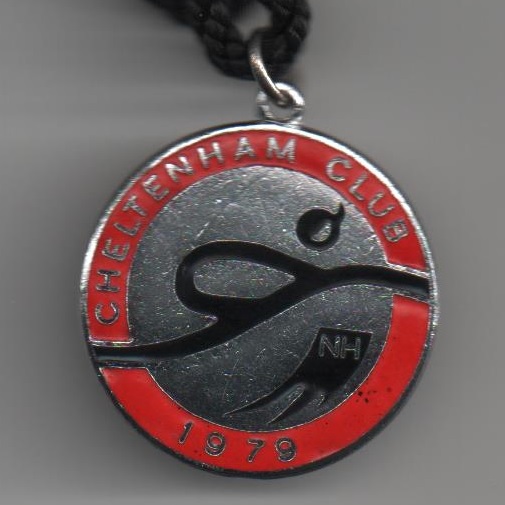

Early history:-The David Nicholson Mares Hurdle was first contested on 14th March 2008 when won by Whiteoak (20/1) owned by Brendan Richardson, trained by Donald McCain and ridden by Jason Maguire, beating Refinement (10/1) and Chomba Womba (100/30 fav) by a short head and two and a half lengths.
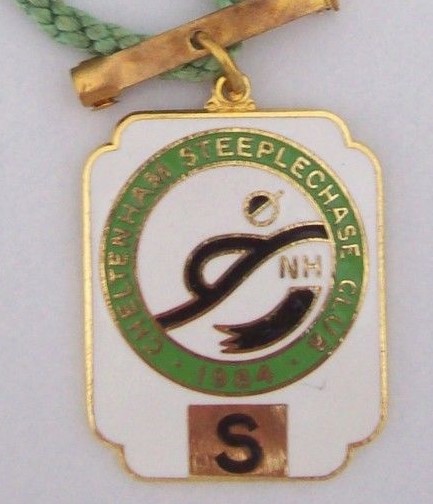

Early History:- The Trull House Stud Mares Novices Hurdle, registered as the Dawn Run Mares Novices Hurdle, was first contested on Thursday 17th March 2016 when won by Limini (8/11 fav) owned by Mrs S Ricci, trained by Willie Mullins and ridden by Ruby Walsh, beating Dusky Legend (50/1) and Bloody Mary (7/1) by 4 and a half lengths and 2 and a half lengths.

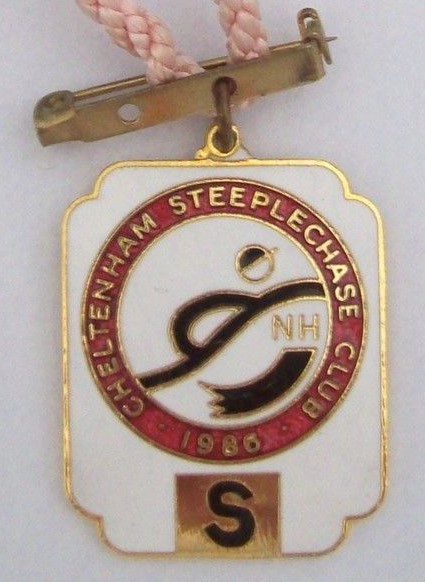

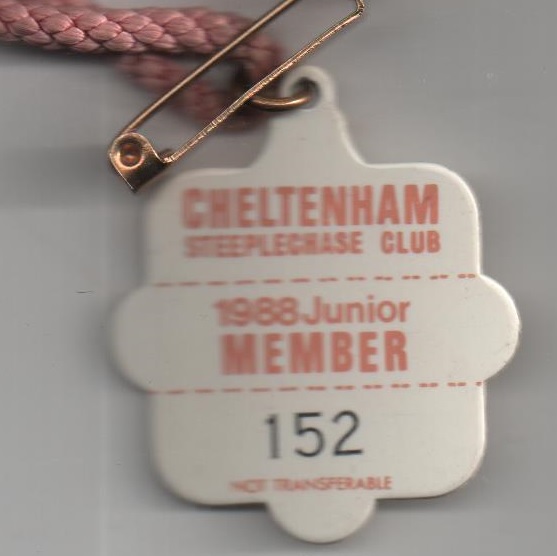

Early history:- The inaugural running of the Martin Pipe Condition Jockeys Hurdle took place on Friday 13th March 2009 and was won by Andytown (25/1) owned by Mr & Mrs R Kelvin-Hughes, trained by Nicky Henderson and ridden by Felix de Giles, beating Midnight Chase (100/1) and Big Eared Fran (7/2 fav).

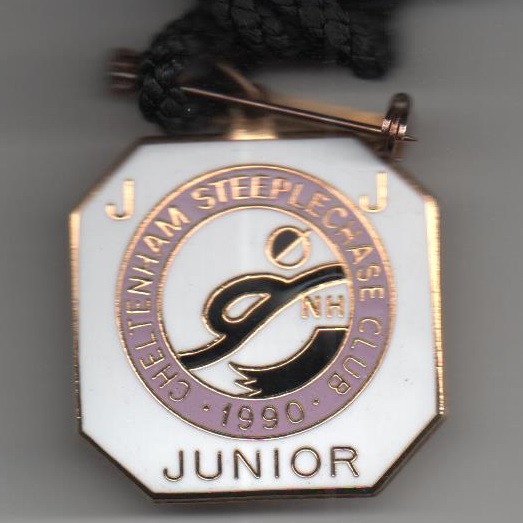

Early history:-The inaugural running of the Mildmay of Flete Handicap Chase took place on Thursday 26th April 1951, resulting in a dead-heat between Canford (100/8) trained by Ivor Anthony and ridden by Glen Kelly, and Slender (7/1) trained by H Ryan Price and ridden by Fred Winter with Martinique (100/8) 2 lengths back in third.
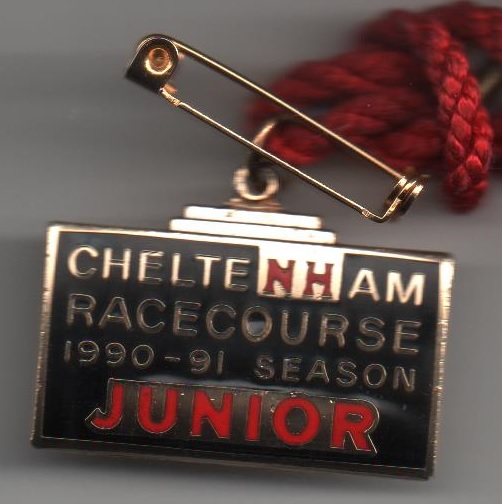

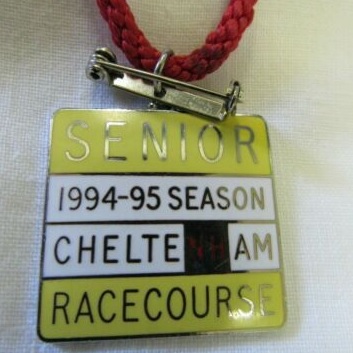


The National Hunt Juvenile Chase, a 4-year-old race over 2 miles and 100 yards was staged at the inaugural Festival meeting in 1911 when won by Asteroid (7/1) owned by Mr W Tyrwhitt-Drake. It was a race won by Grand National winners and Gold Cup winners in its 37-year history, with 1931 Grand National winner Grackle, 1942 Gold Cup winner Medoc II, and 1956 Grand National winner ESB earning their place on the winners board. The race was not always popular, so it was most appropriate that the final time it was run in 1958 it was won by Bee Off ridden by Lord Oaksey, who at the time was known as John Lawrence. Its place in the Festival programme was taken by the National Hunt Two-Mile Champion Chase, known now as the Queen Mother Champion Chase.
Early history:- The inaugural running of the National Hunt Juvenile Chase over 2 miles 100 yards was staged on Wednesday 8th March 1911 when Mr W Tyrwhitt-Drake's Asteroid (7/1) trained by Emerson and ridden by H W Drake beat Little Pitcher (100/7) and Long Water (100/7) by 4 lengths and 5 lengths.


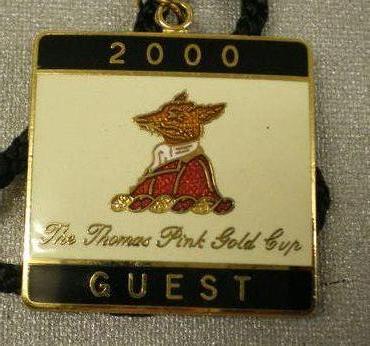
Cheltenham was never going to settle for mediocrity, so it is little surprise that the National Hunt Moderate Chase over 2 miles was run on one occasion as part of the War time 1941 Festival when won by Uplifter. The race was only introduced a few days before the Festival because the National Hunt Juvenile Chase failed to fill, but the Moderate Chase for horses which had not won a race valued at more than £100 since 1938 managed to get subscribers.
Early history:- The National Hunt Moderate Chase £300 over 2 miles took place on Thursday 20th March 1941 when won by The Uplifter (evens fav) trained by Ivor Anthony and ridden by Matthews, beating Grosvenor Bridge (10/1) ridden by Isaac and Lutin III (13/2) ridden by Ensten by a neck and a length.
The Newent Selling Chase over 2 miles 100 yards was first staged at the 1923 Festival and frequently was the first race on the card of subsequent Festivals until 1942. The undoubted star of this race was the lowly Ferrens, trained by George Beeby, who contested this race 6 times, firstly in 1934 when third at the age of 12, winning it in 1937 aged 15, and coming second in 1939 at the ripe old age of 17.
Early history:-The inaugural running of the Newent Selling Chase 200 sovereigns over 2 miles 100 yards was on Wednesday 7th March 1923 when won by Mr C King's Valentine VI (10/1) trained by Hyde and ridden by Mr Prioleau, beating Swimmer (11/2) and Serban (4/1) by half a length and a distance.
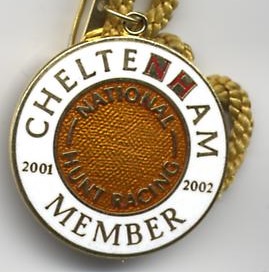
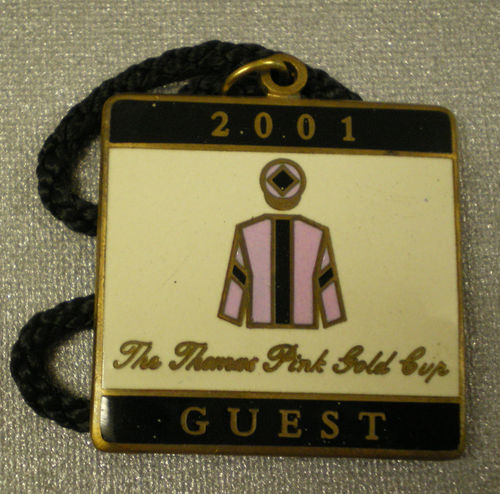
The Open Military Handicap Chase over 3 miles was first staged at the 1924 Festival when won by Ruddy Glow, who repeated the success the next year. The horse was well thought of, being sent off favourite in the 1926 Gold Cup where he ran third. The Open Military Handicap Chase was dropped from the card after the 1926 running.
Early history:-The inaugural running of the Open Military Handicap Chase took place on Thursday 13th March 1924 when won by Ruddy Glow (7/4 fav) trained by H Brown and ridden by Mr F Sankey, beating Snipe's Bridge (10/1) ridden by Mr Thompson and Greenhurst (7/1) ridden by Lord Westmorland by 8 lengths and a head.

The Pertemps Network Hurdle, open to 5-year-olds and upwards, is run over 2 miles 7 furlongs and 213 yards and 12 hurdles of the New Course and was first staged in 1974, replacing the George Duller Hurdle. In its early days it was sponsored by Coral bookmakers when known as the Coral Golden Hurdle Final, but Pertemps took over sponsorship in 2002 when the race was Listed, although it was promoted to Grade 3 in 2018, and is now a Premier Handicap. It consists of a series of qualifiers over a 5 month period, with any horse finishing in the first 4 in a qualifier gaining entry to the Festival Final.
Early history:-The first occasion the Pertemps Hurdle (then known as the Coral Golden Hurdle Final worth £4240) was staged at the Festival was on Tuesday 12th March 1974 when won by Mr A Darlington's Kastrup (10/1) trained by David Barons and ridden by Graham Thorner, beating Garliestown (10/1) ridden by Macer Gifford and Lyford Cay (9/1) ridden by Jeff King by three-quarters of a length and 3 lengths.
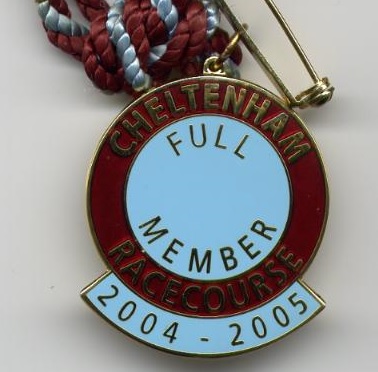
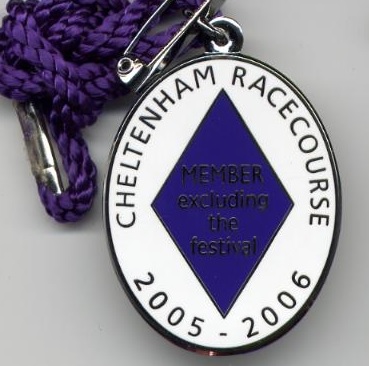
The Prestbury Handicap Chase over 2 miles 100 yards was part of the first Festival card in 1911, although it was staged regularly before the Festival was launched. In 1911 it was won by Another Delight owned by Mr E H Wyndham, but the race only survived for one more year before being dropped from the Festival card.
Early history:- The Prestbury Handicap Steeplechase 200 sovereigns over 2 miles 100 yards was staged on Wednesday 8th March 1911 when won by Another Delight (7/4 fav) owned by Mr E H Wyndham, trained by F E Withington and ridden by A Newey, beating Faithless Lad (10/1) and Click Clack (7/1) by 6 lengths and 10 lengths.

The Queen Mother Champion Chase, a Grade 1 race for 5-year-olds and over, run over 2 miles and 13 fences of the Old Course, was first run in 1959 as the National Hunt Two-Mile Champion Chase. In 1980 it was renamed in honour of the Queen Mother for her contribution and support of National Hunt racing. It was sponsored between 2008 and 2010 by Seasons Holidays before BetVictor followed on.
Early history:-The inaugural running of the National Hunt Two-Mile Champion Chase, forerunner of the Queen Mother Chase, took place on Wednesday 4th March 1959 when won by Quita Que (4/9 fav) owned by Mrs D R Brand and ridden by Mr J Cox, beating Top Twenty (100/9) and Double Star (13/2) by 6 lengths and 15 lengths.

The Rose Hill Handicap Hurdle over 2 miles, named after a local beauty spot near Cheltenham racecourse, was part of the inaugural Festival in 1911. It was not a part of future cards, but the one time it was contested it was won by Hardingstone (5/4 fav).
Early history:-The only time the Rose Hill Handicap Hurdle was staged was on Thursday 9th March 1911 when Hardingstone (5/4 fav) owned by Frank Manning, trained by R Payne and ridden by Bill Payne, beat Bellemontine (3/1) ridden by George Duller and Greentoi (8/1) ridden by Alf Newey by 2 lengths and 10 lengths.
The Seven Springs Handicap Chase, over two and a half miles, was first run at the 1930 Festival when won by Mister Moon (11/10 fav). It was often used by trainers to sharpen up Grand National or Gold Cup runners, notably the 1940 and 1941 winner Medoc II who went on to land the 1942 Gold Cup. Thomond II, so often beaten by the great Golden Miller in the Gold Cup and Grand National, won this race, and another winner in 1948 was Lord Stalbridge who won the 1951 Gold Cup.
Early history:-The inaugural running of the Seven Springs Handicap Chase over 2 and a half miles took place on Tuesday 11th March 1930 when won by R H A Gresson's Mister Moon (11/10 fav) ridden by F B Rees, beating Sunbronze (100/7) ridden by D Williams and Dash O White (100/9) ridden by Keith Piggott.

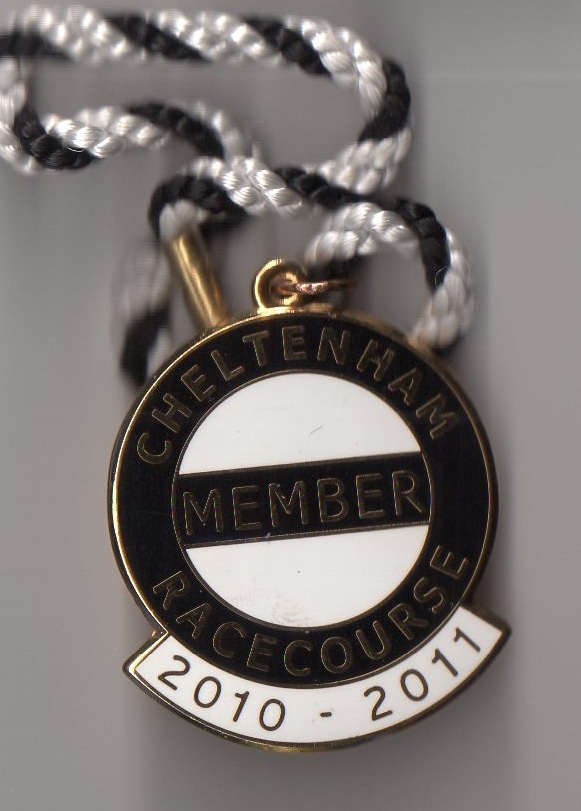
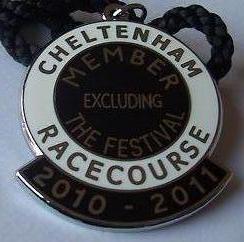
The Southam Selling Chase over 2 miles 100 yards was part of the inaugural 1911 Festival when won by Young Buck II owned by E S Holland, and remained part of the card until 1921.
Early history:- The Southam Selling Chase, run over 2 miles and 100 yards on Wednesday 8th March 1911, was the very first race at the very first Festival. It was won by Young Buck II (11/2) owned by E S Holland, trained by R Cartwright and ridden by J Anthony, beating St Vincent (13/8) and Royal Star (evens fav) by 3 lengths and a distance.
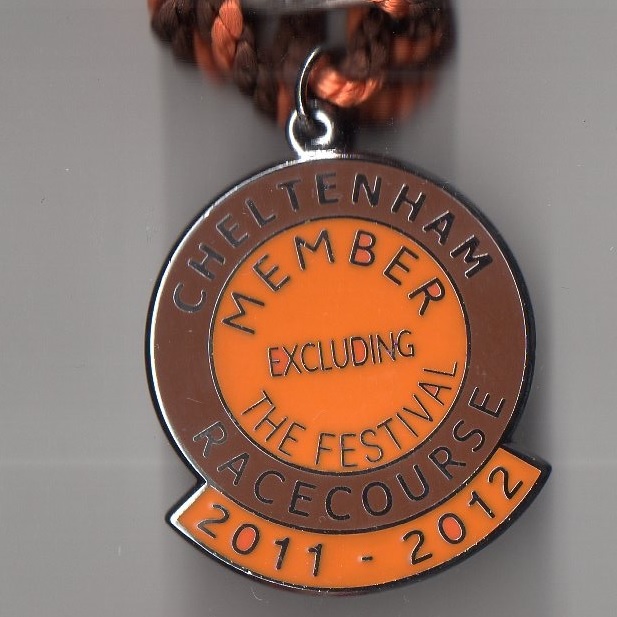
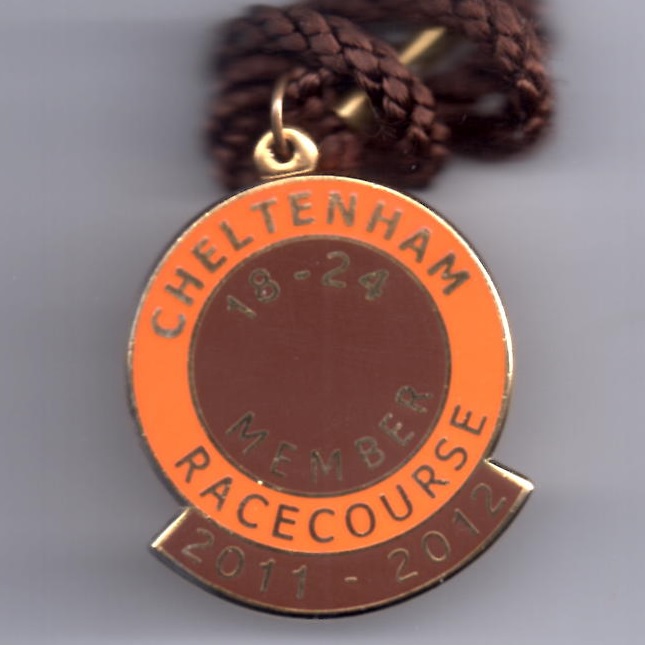

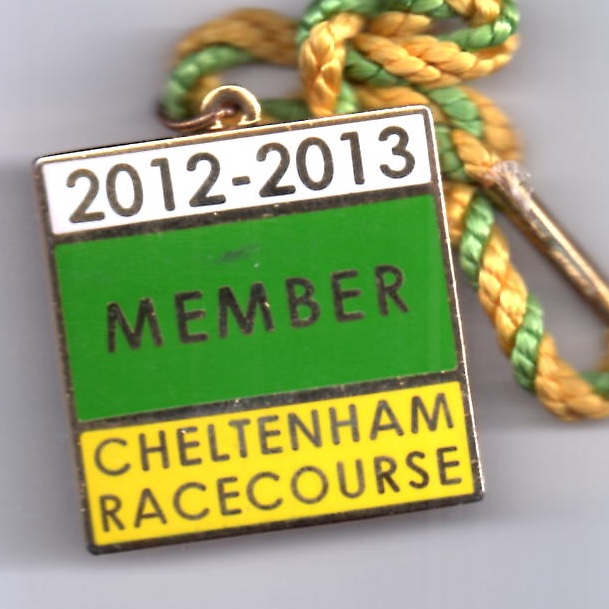
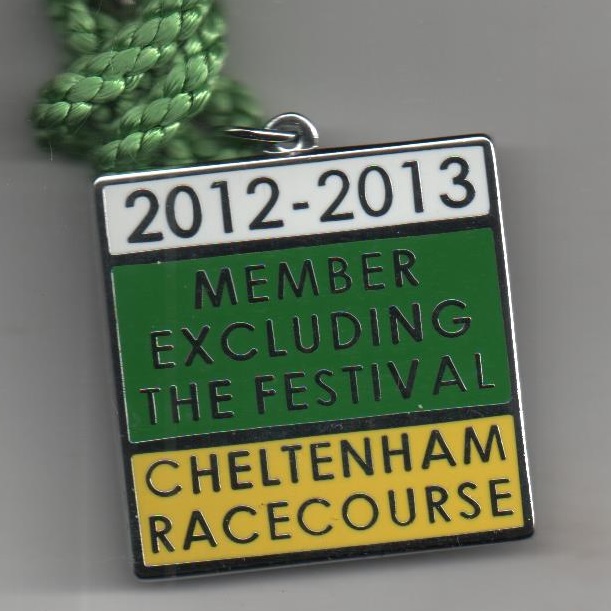
Early history:- The Spa Handicap Steeplechase, run over 2 miles on Saturday 21st March 1942, was the penultimate race on the second Saturday of the two day Festival, split over 2 Saturday's due to restrictions in the middle of the Second World War. It was won by Jack Pugh (6/1) owned by Major Dugdale, trained by Reg Hobbs and ridden by H Frenchie Nicholson, beating Tutor (100/7) and Knight O' London (8/1) by 8 lengths and 2 lengths.

The Spa Novices Hurdle, better known now as the Albert Bartlett Hurdle, is a Grade 1 race for 5-year-olds and upwards over 3 miles and 12 hurdles and was first run as a Grade 2 on 18th March 2005, when the Festival was extended to 4 days, and won by Moulin Riche (9/1) ridden by Robert Thornton.
Early history:-The inaugural running of the Spa Novices Hurdle took place on 18th March 2005 when won by Moulin Riche (9/1) owned by Jean-Claude Seroul, trained by Francois Doumen and ridden by Robert Thornton, beating Over The Creek (5/1) ridden by Timmy Murphy and Brewster (9/4 fav) ridden by Richard Johnson.
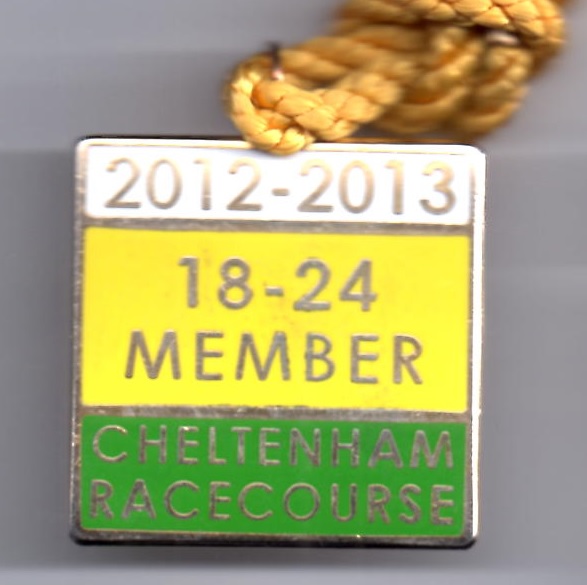
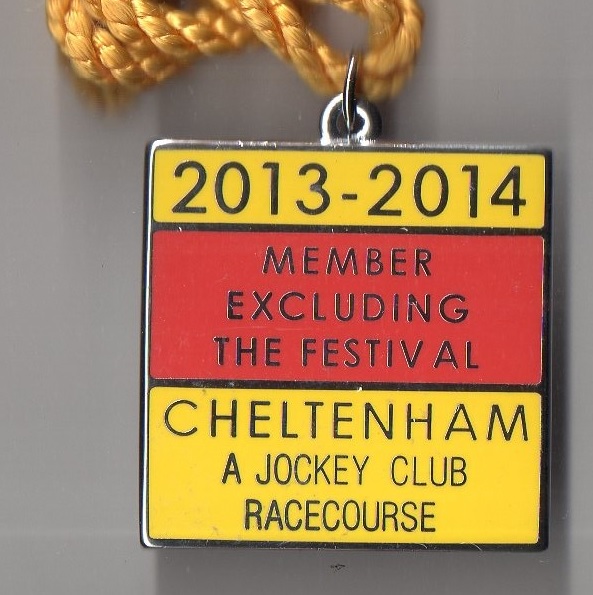

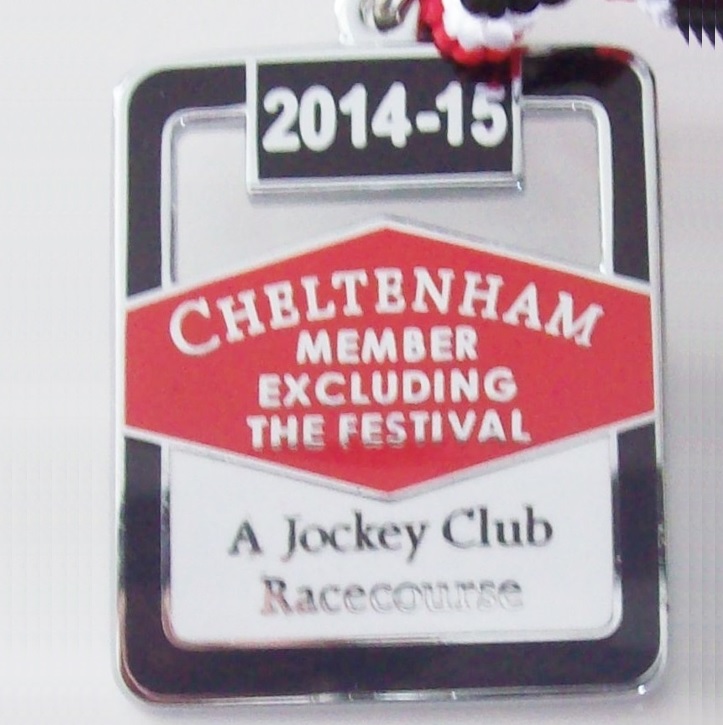


The Stayers Hurdle, also known as the World Hurdle, is an important Grade 1 race over 3 miles, but started off as the Stayers Selling Hurdle in 1912, which in turn was replaced by the Spa Hurdle in 1942, although that race was also staged as a one-off in 1923.
Early history:-Whilst it is difficult to put a precise date on when this race was first run, a 3 mile stayers hurdle was contested at the second Festival meeting in 1912, although it was a selling race on Wednesday 13th March 1912 when won by Honey (7/1) owned by Mr J W Pullen, trained by Newey and ridden by Alf Newey, beating Thermal (100/8) and Sweet Peach (100/8) by 20 lengths and 15 lengths.

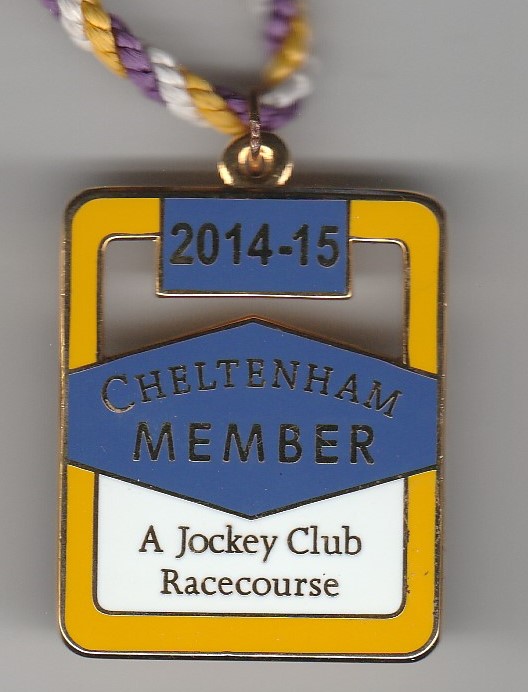
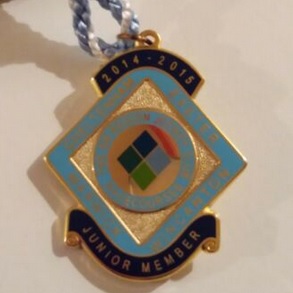
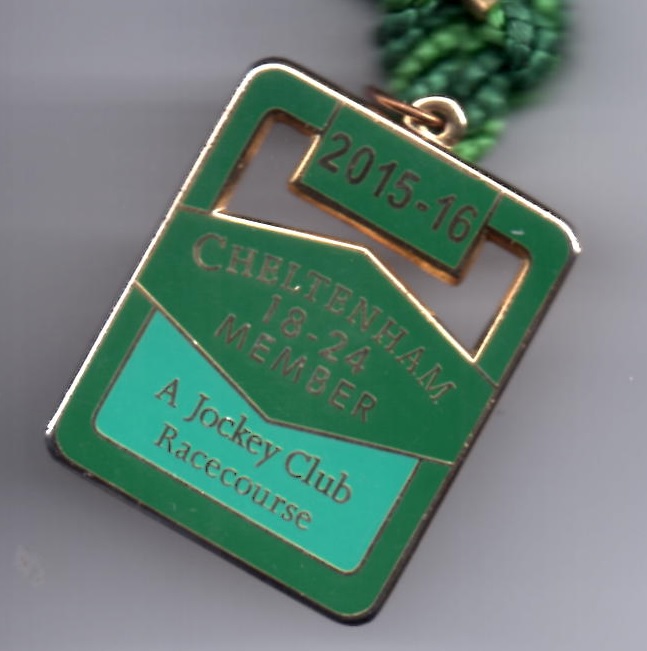

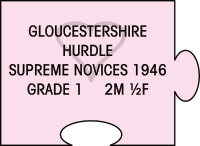
The Supreme Novices Hurdle, a Grade 1 race for 4-year-olds and over, is run over 2 miles and 87 yards and 8 hurdles of the Old Course and now opens the Festival on the first day to the roar of the large crowd eager to get the Festival underway. It began as the Gloucestershire Hurdle in 1920, although that race technically replaced the earlier race named the Gloucestershire Maiden Hurdle which was run between 1911 and 1919. The Gloucestershire Hurdle was often so popular that it had to be divided into two, and sometimes three, divisions and, in the early days after the War it was dominated by Vincent O’Brien who notched up 10 wins in just 8 years after winning a number of the divisions. In 1974 it was renamed the Lloyds Bank Champion Novices Hurdle, while in 1978 Waterford Crystal became a popular sponsor.
Early history:-Although it is difficult to pinpoint the exact year the Gloucestershire Hurdle was run for the first time, it replaced the Gloucestershire Maiden Hurdle in 1920, a race which had been staged between 1911 and 1919. The Gloucestershire Hurdle on Wednesday 10th March 1920 was won by Toluol (4/7 fav) owned by Mr Jeffrey, trained by Etienne De Mestre and ridden by R Wilkins, beating Tarazia (5/1) and Nubian (8/1) by 8 lengths and a head.


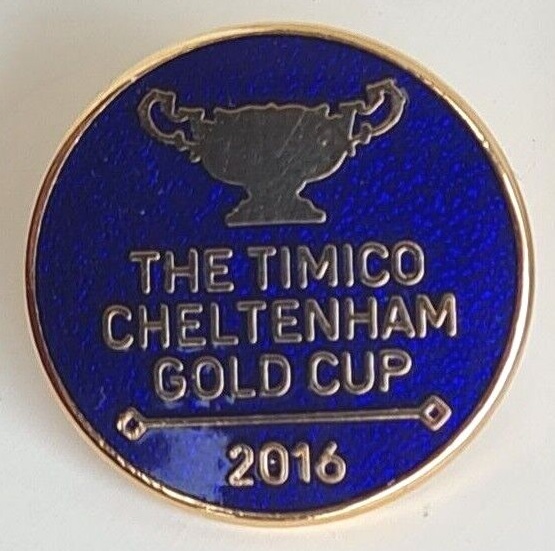
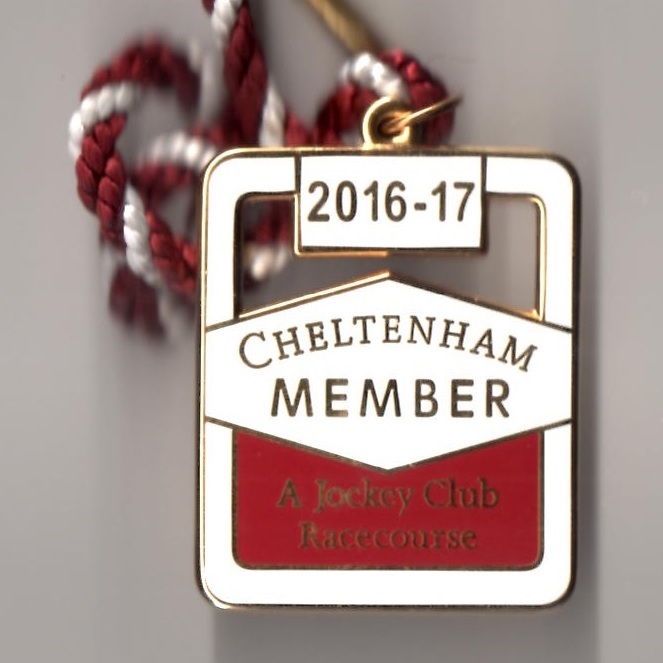
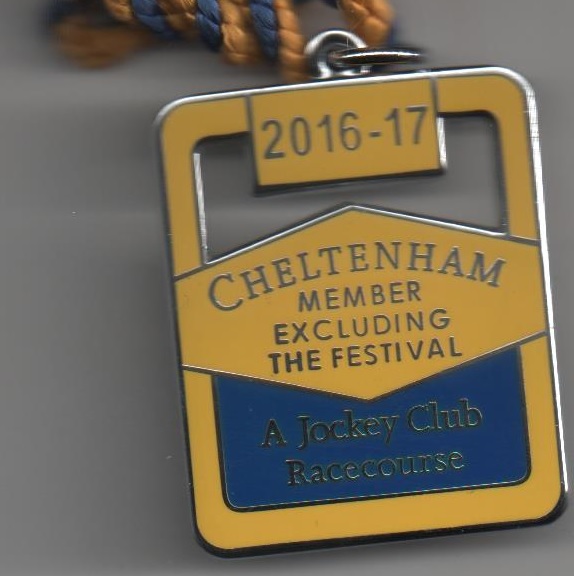
The Swindon Hurdle, run over 3 miles, was staged for just 2 years, replacing the Stayers Selling Hurdle in 1928, but was then replaced by that same race in 1930.
Early history:- The inaugural running of the Swindon Hurdle took place on Tuesday 13th March 1928 over 3 miles and was won by Captain C Leyland's Bacchanale (7/2) trained by J Scott and ridden by Goswell, beating Martyr (10/1) and White Mountain (4/1) by a head and 3 lengths.
The Swindon Selling Chase over 3 miles was part of the very first Festival programme in 1911 when won by Spinning Coin owned by Mr F C Stern trained by G S Davies and ridden by Mr H A Brown. It remained part of the programme right up to the start of the Second World War and in 1920 was won by Denis Auburn who had also landed the Foxhunters Chase in 1915.
Early history:- The inaugural running of the Swindon Selling Steeplechase worth 200 sovereigns over 3 miles took place on Thursday 9th March 1911 and was won by Spinning Coin (9/4 fav) owned by Mr F C Stern trained by G S Davies and ridden by Mr H A Brown, beating Howth Park (6/1) and Tokay (8/1) by 4 lengths and a distance.
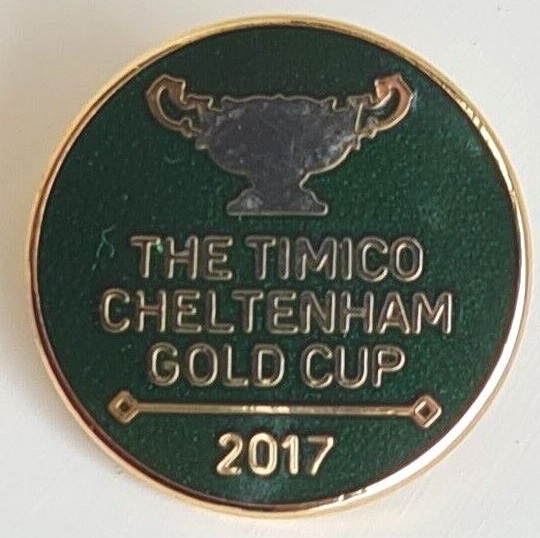
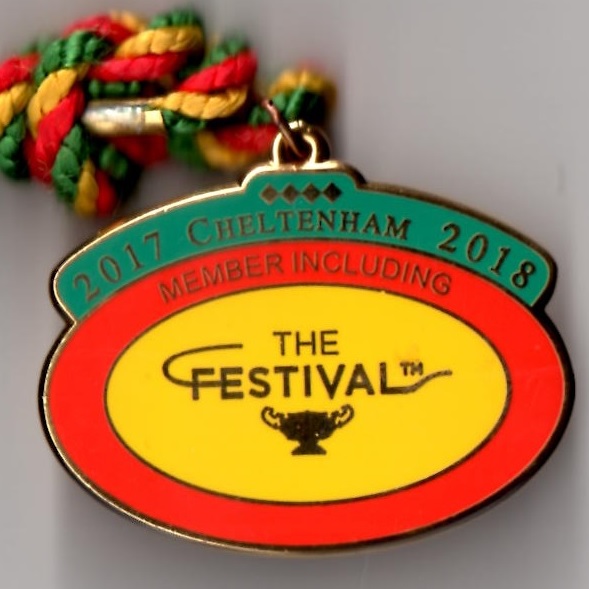
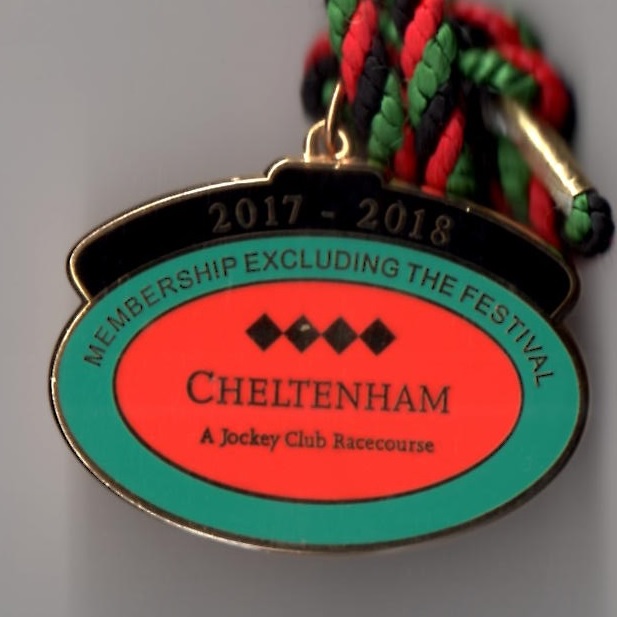
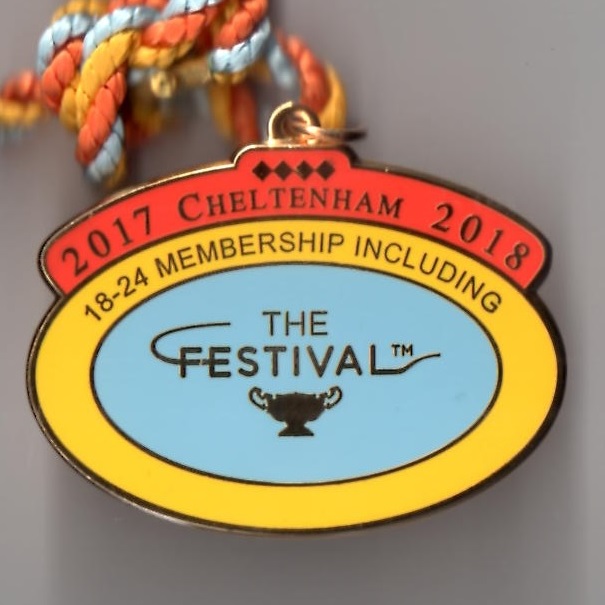
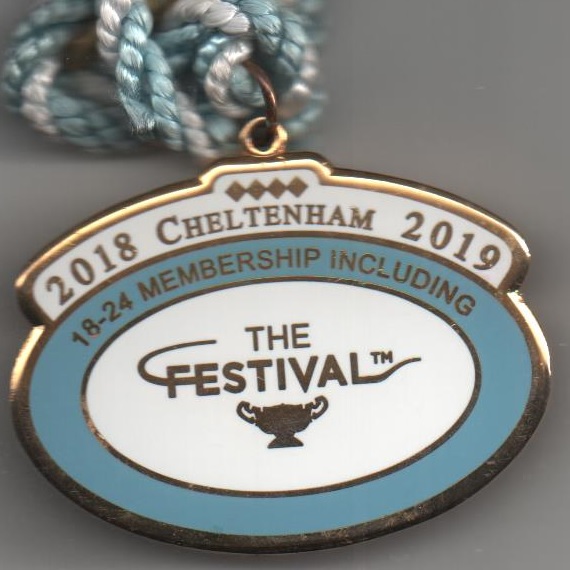

The Triumph Hurdle, a Grade 1 race for 4-year-olds run over 2 miles 179 yards and 8 hurdles on the New Course, was first run at Hurst Park in 1939 when won by Grey Talk, trained by George Bachelor and ridden by Serge Rochet, a French horse, the first of 6 of the first 7 winners which were French. On a number of occasions Flat race jockeys have ridden the winner of the race, most famously in 1954 when Lester Piggott partnered Prince Charlemagne to victory. The final time it was staged at Hurst Park was in 1962 when Beaver II was victorious in the hands of Josh Gifford, but there was a two-year period once Hurst Park closed when the race was not held. Cheltenham incorporated the race into its Festival in 1965 when won by Blarney Beacon, and for a number of years the Daily Express sponsored the famous race. Currently the race traditionally opens the card on Gold Cup day.
Early history:- The very first Triumph Hurdle was held at Hurst Park in 1939 when the French horse Grey Talk, trained by George Bachelor and ridden by Serge Rochet, was successful. The inaugural running of the Triumph Hurdle at the Festival was in 1965 when Blarney Beacon, trained by Ron Smyth, was victorious in the hands of Geordie Ramshaw who later went on to carve a career as a Flat race jockey.
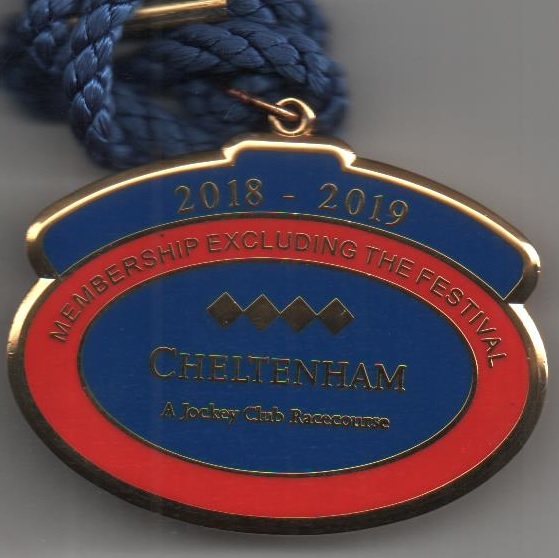
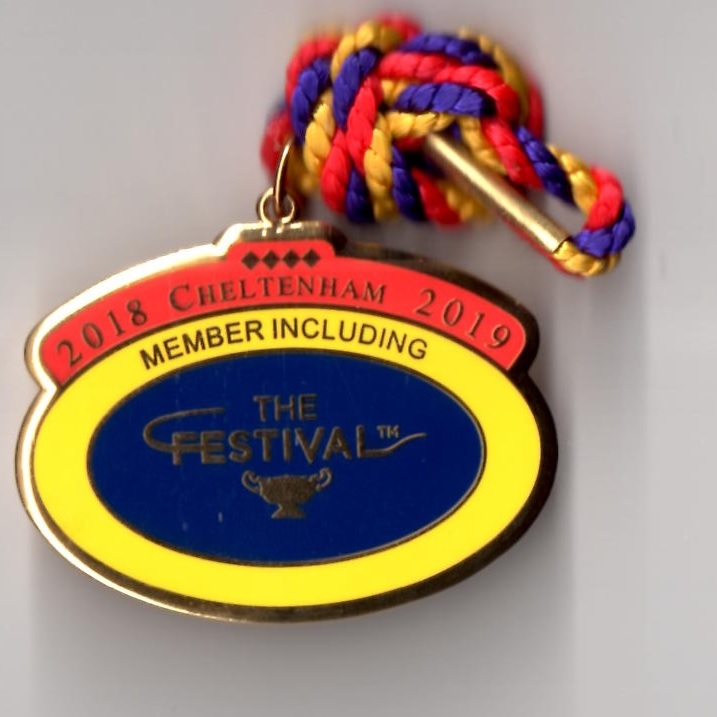

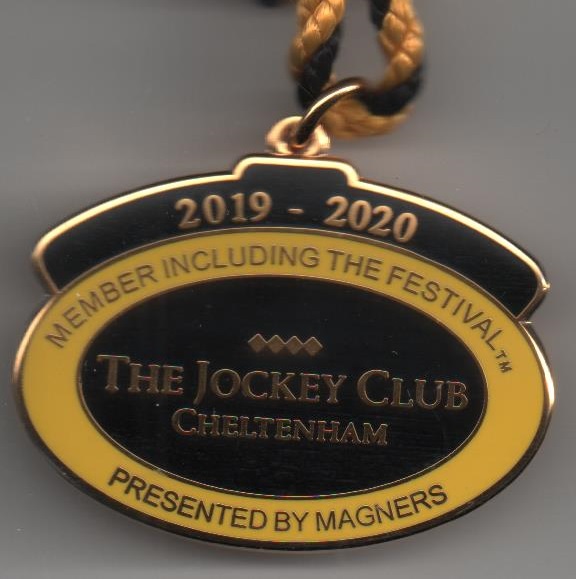
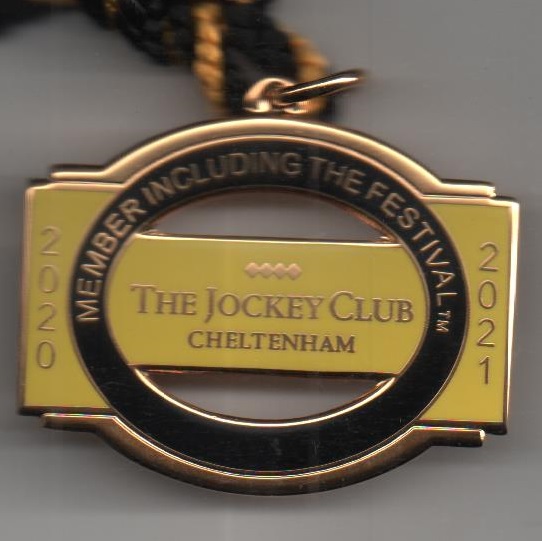
The United Hunts Challenge Cup Chase over 3 and a half miles was a very popular event first held at the 1923 Festival, and continued to be part of the Festival card until 1973. Although it did not become part of the Festival programme until 1923, it was launched in April 1912 when won by Our Philip (100/30) owned, trained and ridden by Mr J H Purvis. The Cup, valued at £50 in 1912, stood 16 inches high and contained some fine workmanship, modelling foxes masks, foxhounds and hunters heads fashioned into handles. It was designed and manufactured by Messrs Simmons to the orders of Messrs Pratt & Co, London. It was run again in 1914, but at a different time than the Festival, when won by Mr J Eccles' Chatburn (2/1 fav), and after 1973 it was moved to the special Hunter Chase meeting staged at Cheltenham each April. During its half-century history it has been won in consecutive years by Cheerful Marcus in 1935 and 1936, but 2 other horses have notched up doubles in the race, Uppergrange in 1926 and 1928, and Mr Teddy in 1959 and 1962. However, the most famous horse to contest the race was Baulking Green who won it 4 times, including a trio of consecutive victories between 1963 and 1965.
Early history:- The inaugural running of the United Hunts Challenge Cup Chase took place on Wednesday 7th March 1923 over 3 and a half miles and was won by Palm Ring (7/2) trained by Pease and ridden by Mr C Kurk, beating Lucy's Brother (100/8) and Ionian Ferry (7/1) by 20 lengths and 3 lengths.
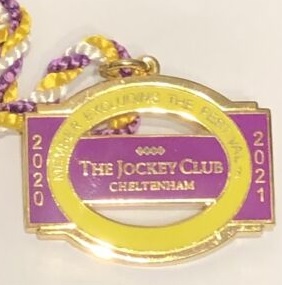


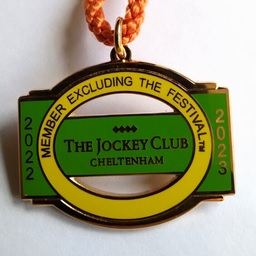

The United Services Hunter Challenge Cup over 3 and a half miles was first staged at the 1927 Festival when won by Kilkenny ridden by Captain Gossage. It continued to be part of the Festival card for the next two years, but was dropped by 1930.
Early history:-The first running of the United Services Hunter Challenge Cup over 3 and a half miles at the Festival was on Thursday 10th March 1927 when Kilkenny (4/1) owned by Commander J McCowen, trained by M Lindsay and ridden by Captain Gossage beat Red Gauntlet III (8/1) and Theorem (100/8) by 8 lengths and 10 lengths.
Festival Jockeys Order of Merit
Up to, and including the 2024 Festival, the top jockeys, based on number of winners, is shown below.
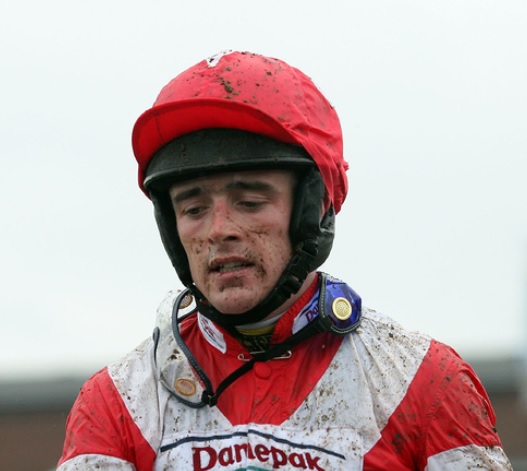
RUBY WALSH 59 winners
Rupert Edward Walsh, universally known as Ruby, was born in Kill, County Kildare, on 14th May 1979, son of the well-respected trainer and former amateur jockey Ted Walsh and his wife Helen. After a good grounding as an amateur jockey riding for his father Ted, he partnered his first winner, Siren Song, at Gowran Park on 15th July 1995 in a bumper. Ten months later he rode his first hurdle winner, Katiymann, at Leopardstown on 22nd May 1996. He was crowned Irish National Hunt Champion jockey on 12 occasions, starting in the 1998-99 season, with his final championship coming in the 2016-17 season. He won his first Aintree Grand National in 2000 aboard Papillon trained by Ted Walsh, following it up 5 years later on Hedgehunter. During his long career he teamed up with Champion trainers on both sides of the Irish Sea, Willie Mullins in Ireland and Paul Nicholls in England, partnerships which enabled him to be crowned leading rider at the Cheltenham Festival on 11 occasions. Furthermore, his 59 Festival winners places him at the top of jockeys table, 16 clear of Barry Geraghty, and 28 clear of Tony McCoy. Twice he achieved 7 wins at a Festival, firstly in 2009 and again in 2016. Amongst those record breaking 59 winners are two Gold Cup wins aboard Kauto Star, and four Champion Hurdle successes aboard Hurricane Fly twice, Faugheen and Annie Power. On 1st May 2019, after partnering Kemboy to victory in the Punchestown Gold Cup, Ruby announced his retirement with immediate effect, bringing to a close a remarkable riding career spanning 24 seasons.
Above image shown under common license courtesy of DavyJonesLocker
Barry Geraghty 48
Paul Townend 34
Tony McCoy
31
Davy Russell 25
Pat Taaffe 25
Tommy Carberry 23
Richard Johnson 23
Richard Dunwoody 18
Charlie Swan 17
Fred Winter 17
Nico de Boinville 16
Robert Thornton 16
Rachael Blackmore 14
Paul Carberry 14
Mick Fitzgerald 14
Fred B Rees 14
Bryan Marshall 13
Peter Scudamore 13
David Nicholson 12
George Duller 11
John Francome 11
Danny Morgan 11
Jamie Osborne 11
Norman Williamson 11
Jack Kennedy 11
H A Brown 10
Jamie Codd 10
Dave Dick 10
Michael Scudamore 10
Tom Scudamore 10
Up to, and including the 2024 Festival, the top trainers, based on number of winners, is shown below.
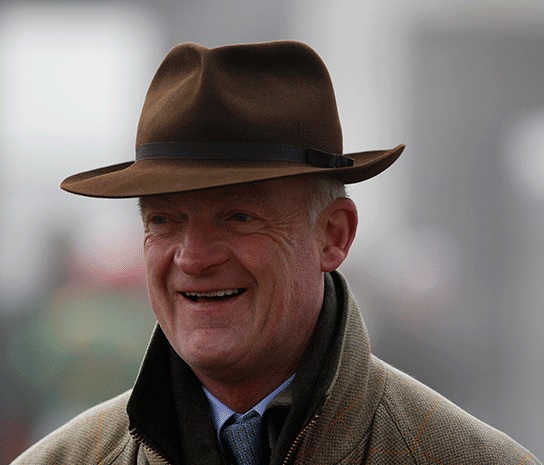
WILLIE MULLINS 103 winners
William Peter Mullins, born on 15th September 1956, is the son of former Champion Irish racehorse trainer Paddy Mullins, who trained for 52 years, was Champion Irish National Hunt Trainer on 6 occasions, and trained the wonderful mare Dawn Run, the only mare to win the Champion Hurdle and Gold Cup. Willie, who worked as assistant to his father, surpassed his father's training achievements with ease. To date he has been crowned Champion Irish National Hunt trainer on 18 occasions and leads the Cheltenham Festival trainers list with an impressive 103 victories by the end of the 2024 season. After winning the Irish Amateur Jockeys Championship six times, he gained his first Cheltenham Festival victory as a trainer in 1995 when Tourist Attraction landed the Supreme Novices Hurdle. He has dominated the Champion Bumper race, winning it no less than 12 times to date, but has also won the Supreme Novices 7 times. Furthermore, he has been victorious in the big four Cheltenham races on 11 occasions, winning the Gold Cup 3 times, the Champion Hurdle 4 times, and the Queen Mother Champion Chase and Stayers Hurdle twice each. Few would doubt that there is more to come, and that he will extend his lead over his nearest challenger, Nicky Henderson, who remains 30 wins behind Mullins.

NICKY HENDERSON 73 winners
Nicholas John Henderson OBE, son of Johnny Henderson and his wife Katherine Beckwith-Smith, was born on 10th December 1950 and educated at Eton College. He was always likely to carve out a career in racing for his father, who died in 2003, loved the sport and was one of the founding members of the Racecourse Holdings Trust. To commemorate his father's achievements in the sport Cheltenham renamed one of their races the Johnny Henderson Grand Annual Chase. Nicky, whose Godfather was Field Marshall Montgomery, rode as an amateur, notching up 69 wins, notably the 1977 Foxhunters Chase at Aintree on Happy Warrior and the Imperial Cup on Acquaint, and gained invaluable experience as assistant to Fred Winter for 4 years between 1974 and 1978, learning his trade from a man who had both ridden and trained Grand National winners. In 1976 he married Diana and the couple were blessed with 3 daughters, Camilla, Tessa and Sarah. In July 1978 he successfully applied for a trainer's licence in his own right and began training at Windsor House Stables in Lambourn. Whilst at Windsor House he became Champion National Hunt Trainer for 2 consecutive years from 1985 to 1987, following on from his former boss Fred Winter. It was a highly successful period for Nicky, winning the Champion Hurdle in 3 consecutive years with See You Then between 1985 and 1987, and he also won the 1992 Queen Mother Champion Chase with Remittance Man. During his time at Windsor House he notched up two Triumph Hurdle wins with First Bout in 1985 and Alone Success in 1987, and an Arkle Challenge Trophy with Remittance Man in 1991. In all, in this early period of his career, between 1978 and 1992, he won 14 races at the Cheltenham Festival. He was then offered the chance to transfer to the historic Seven Barrows training establishment, complete with its private gallops, exchanging places with Epsom Derby winning trainer Peter Walwyn, with Walwyn moving to Windsor House Stables.
Although he developed his early training talents at Windsor House, honing his skill year on year, when he moved to Seven Barrows he was able to extend his string and become a master of his trade, recognised worldwide as one of the top trainers of all time. His high number of Cheltenham Festival successes provides sufficient evidence for any doubters.
Paul Nicholls 49
Fulke Walwyn 40
Gordon Elliott 40
Martin Pipe 34
Fred Winter 29
Fred Rimell 28
Jonjo O’Neill 27
Tom Dreaper 26
Vincent O’Brien 23
Bob Turnell 23
Henry De Bromhead 23
Ivor Anthony 22
George Beeby 21
Philip Hobbs 20
Edward O’Grady 18
David Nicholson 17
Nigel Twiston-Davies 17
Alan King 16
Jack Anthony 15
David Pipe 15
H A Brown 14
Tom Coulthwaite 14
Dan Moore 14
Peter Easterby 13
H Ryan Price 12
Jessica Harrington 11
W Payne 11
Up to, and including the 2024 Festival, the top owners, based on number of winners, is shown below.
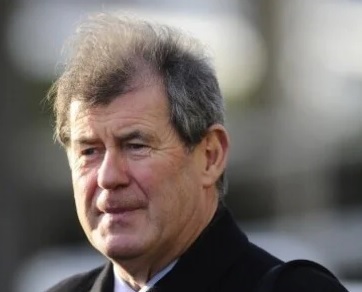
JOHN P McMANUS 78 winners
John Patrick McManus, born in Limerick on 10th March 1951, is a businessman and former shareholder of Manchester United Football Club. However, he is best known as a racehorse owner, recording his first Cheltenham Festival success in March 1982 in the Baring Bingham Hurdle with Mister Donovan (9/2) trained by Edward O'Grady and ridden by Tommy Ryan. Since then he has gone on to notch up a further 77 victories up to the end of the 2024 Festival, including 14 wins in the big four Cheltenham races, and two victories in the Aintree Grand National. The first of those Aintree wins was in 2010 when many times champion jockey Tony McCoy finally added the Grand National to his CV aboard Don't Push It. After McCoy had retired, J P McManus landed a second National in 2021 with Minella Times at 11/1. Mc Manus has won the Gold Cup just once with Synchronised in 2012, but has notched up 4 wins in the Stayers Hurdle, twice with Baracouda in 2002 and 2003, winning it again in 2014 with More of That, and for a fourth time in 2023 with Sire Du Berlais at 33/1. However, it is in the Champion Hurdle that McManus has been most successful, winning it no less than 9 times to date, including 3 consecutive victories between 1998 and 2000 with Istabraq, and scoring a double with Buveur D'Air in 2017 and 2018. There is little doubt that the Cheltenham Festival is one of McManus's favourite meetings of the year, and it is extremely likely he will extend his lead over his nearest challenger, Gigginstown House Stud, widening the gap between them which currently stands at 50.
John P McManus 78
Gigginstown House Stud 34
Miss Dorothy Paget 28
Mrs Susannah Ricci 22
Andrea & Graham Wylie 13
The Johnson Family 13
Trevor Hemmings 12
Harry Jim Joel 12
Anne, Duchess of Westminster 11
Cheveley Park Stud 11
John Hay Whitney 9
Lord Bicester 8
John Hales 8
Hammer & Trowel Syndicate 8
Lord Londesborough 8
Ronnie A Bartlett 8
Simon Munir & Isaac Souede 8
Mrs J Donnelly 7
Michael Buckley 6
Jim Lewis 6
Kenny Alexander 5
George Ansley 5
Major Noel Furlong 5
Paul Mellon 5
Clive D Smith 5
Robert Waley-Cohen 5
Terry Warner 5
Up to, and including the 2024 Festival, the top racehorse, based on number of winners, is shown below.

QUEVEGA 6 wins
Quevega, a bay mare by Robin des Champs out of Vega, was foaled on 11th April 2004 and bred in France by Pierre Rives. She was owned throughout her long, successful racing career by the Hammer & Trowel syndicate, starting her racing career in France in the 2007 season where she was trained by Bertrand De Watrigant. She won her first race over a mile and a half in September 2007 at Vichy, following up in two further races that season, after which she was transferred to Willie Mullins stables in Ireland. Mullins did not over-race her in her first season in Ireland, winning her maiden hurdle at Punchestown in February 2008, following up in the Duggans Profiles Novice Hurdle in April at Gowran Park, the last of her victories that season. After a prolonged absence from the racecourse she landed the odds in a two and a half mile hurdle race at Punchestown before winning her first Mares Hurdle, the inaugural running of the race named in honour of local trainer David Nicholson, at the Cheltenham Festival. Although she took on the Champion Hurdle winner over 2 miles at Punchestown, she was found wanting for speed, but returned to Cheltenham the next year to win the Mares Hurdle for a second time, and was able to also land the World Series Hurdle over 3 miles at Punchestown.
Quevega, shown courtesy of David Heap under common license
5 wins
Golden Miller
Tiger Roll
4 wins
Altior
Arkle
Big Bucks
Dudley
Honeysuckle
Istabraq
Medoc II
Persian War
Sir Ken
Willie Wumpkins
3 wins
Albertas Run
Arctic Gold
Badsworth Boy
Beau Normand
Best Mate
Bobs Worth
Bula
Cause of Causes
Cottage Rake
Delta Worth
Envoi Allen
Flyingbolt
Fortria
Half Free
Hardy Eustace
Hattons Grace
Inglis Driver
L’Escargot
Master Mowbray
Moscow Flyer
Pearlyman
Quita Que
See You Then
Silver Fame
Sire Du Berlais
Sprinter Sacre
Vautour